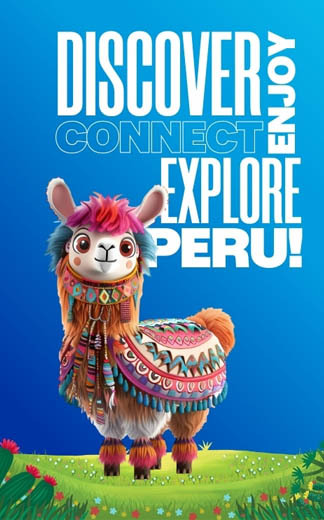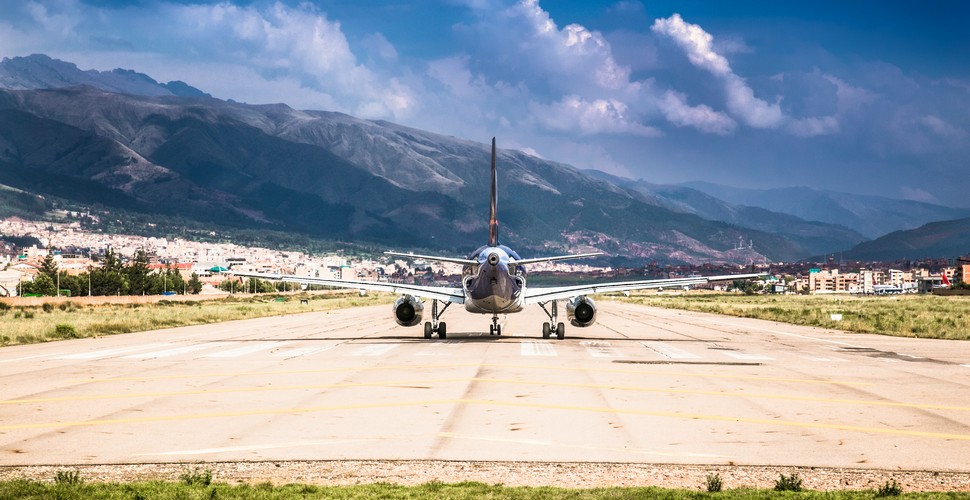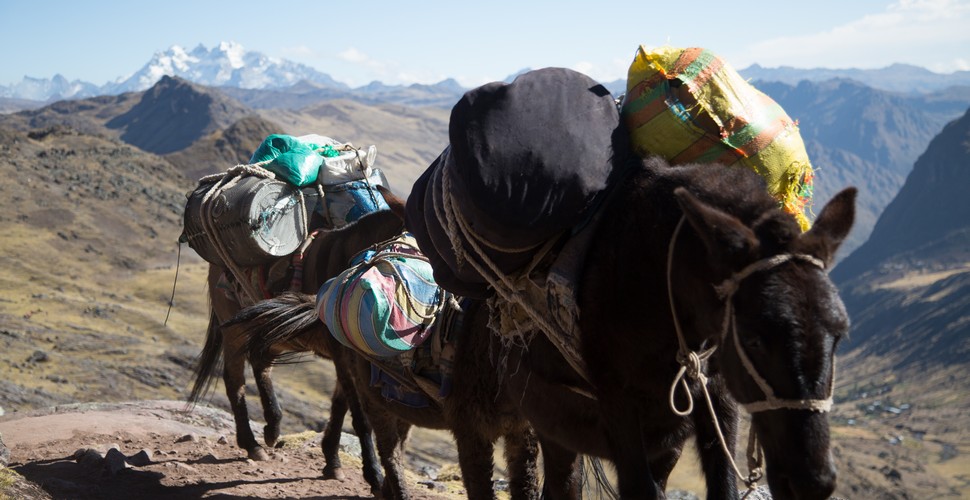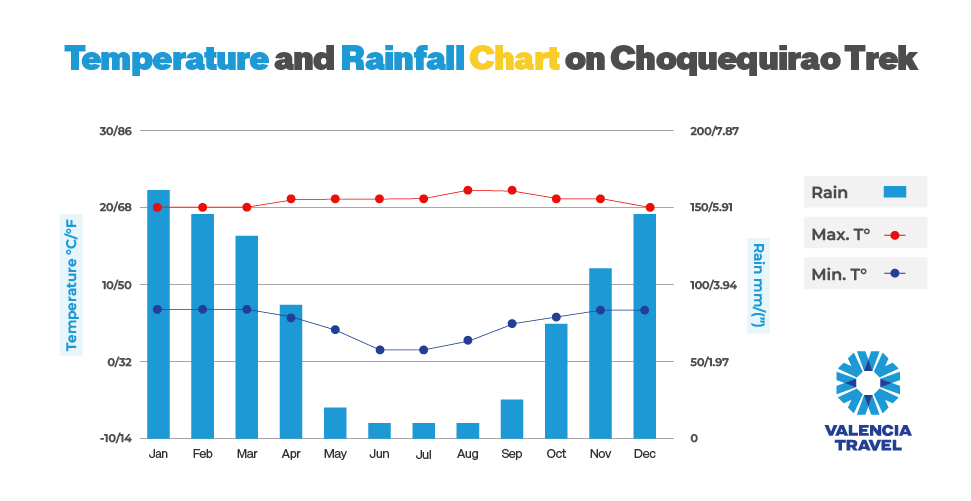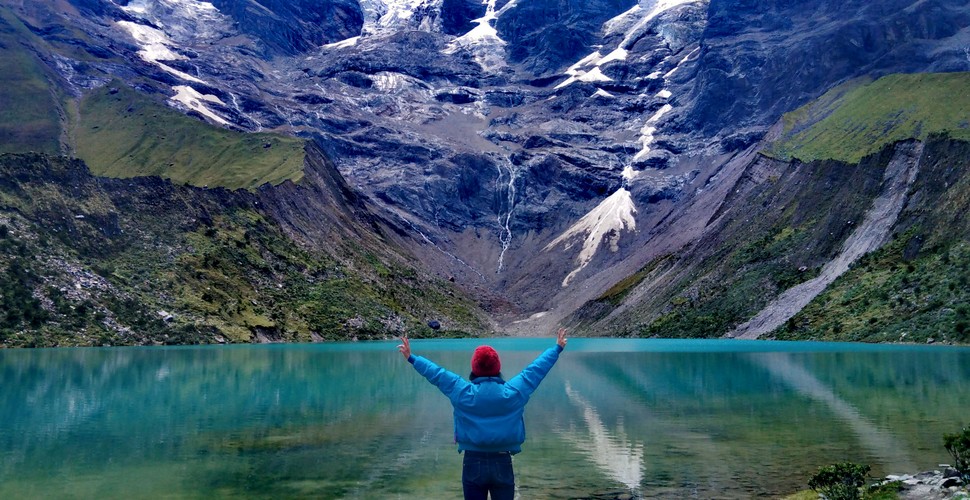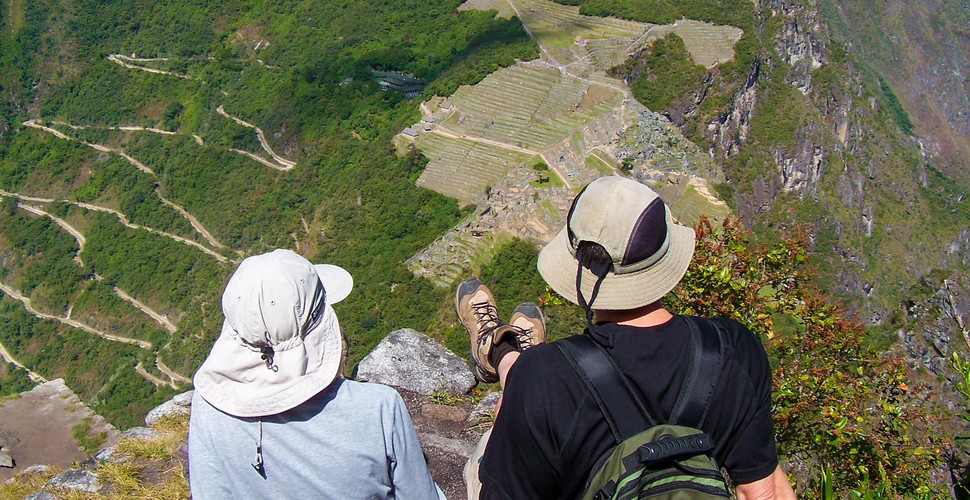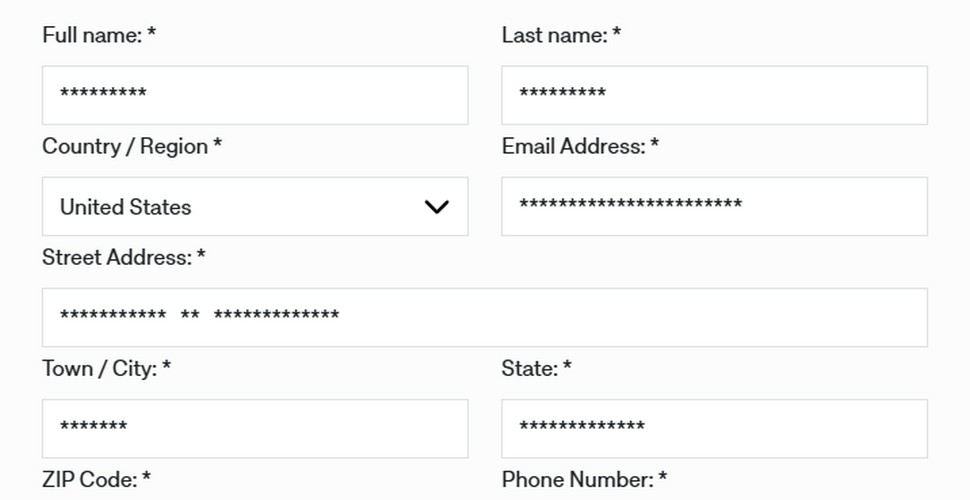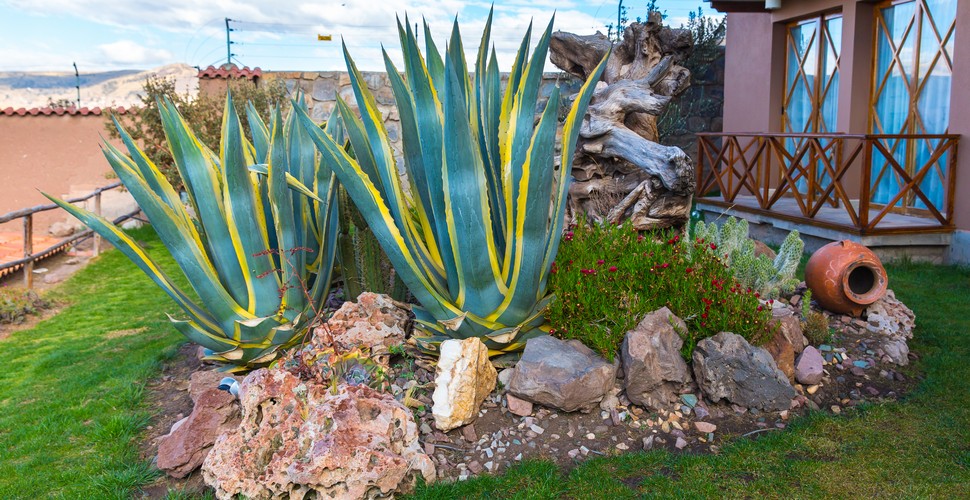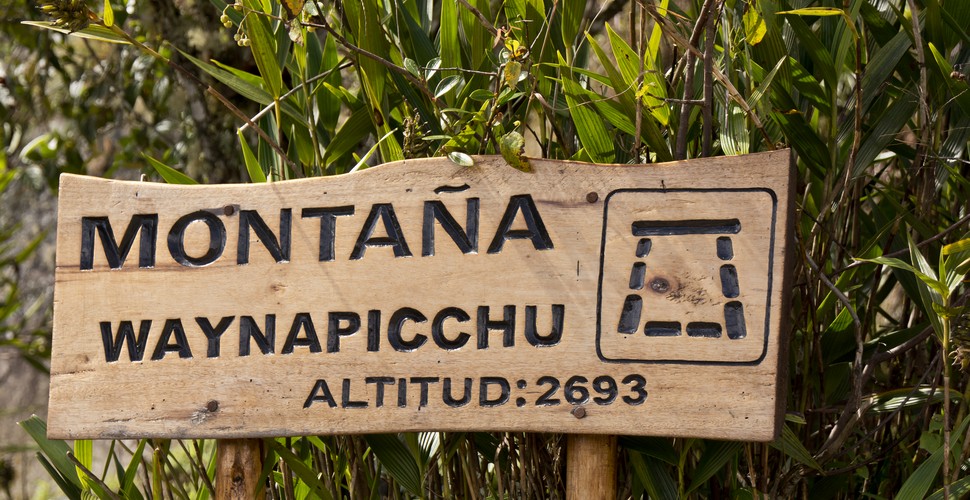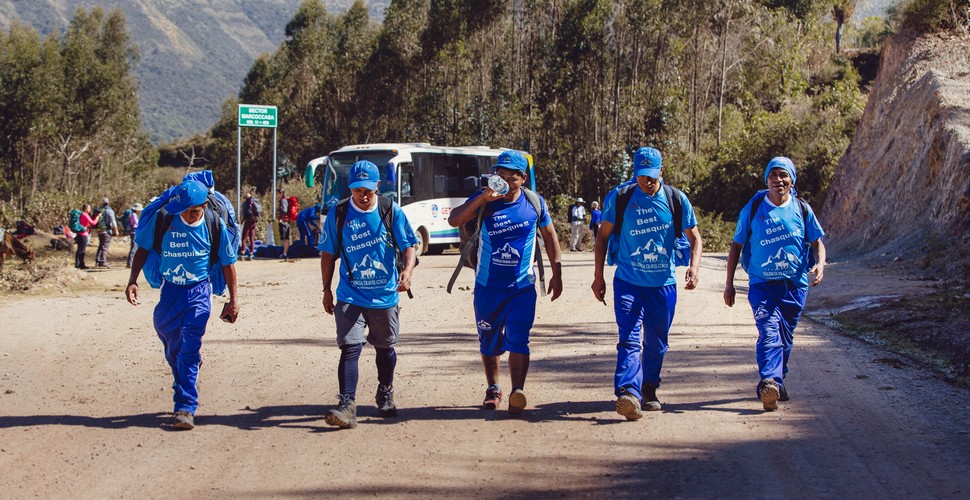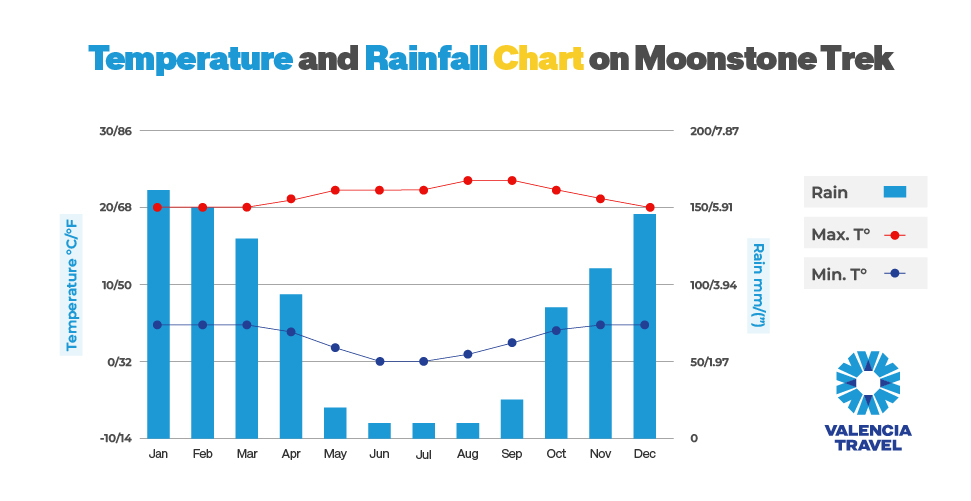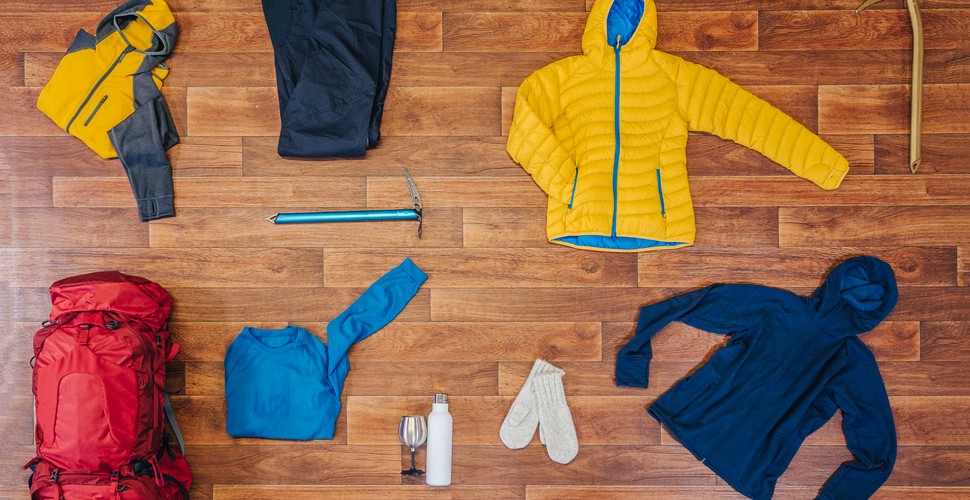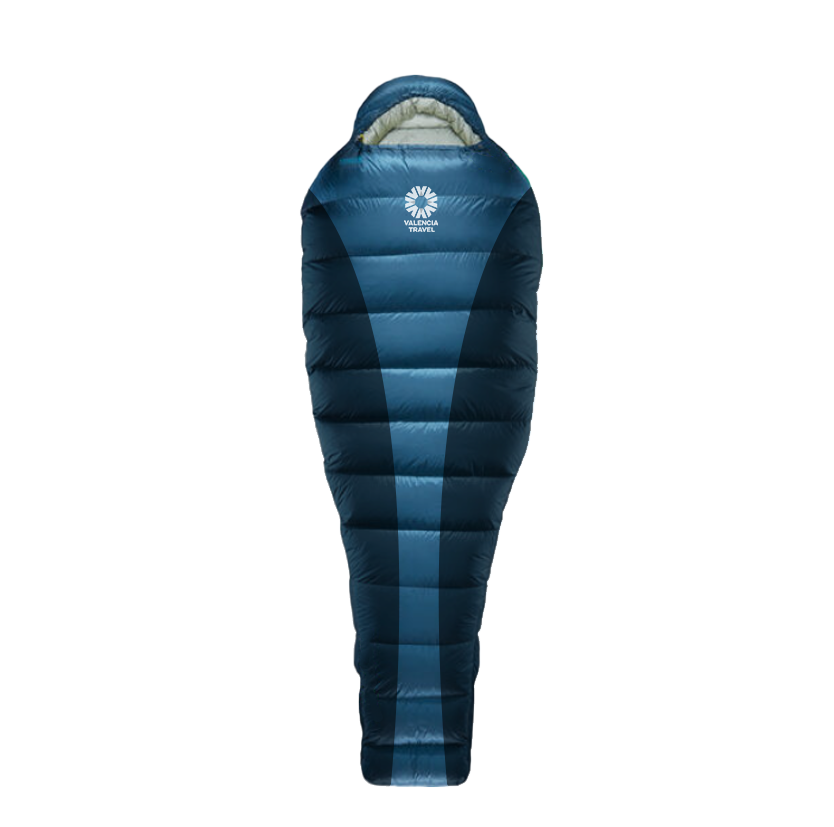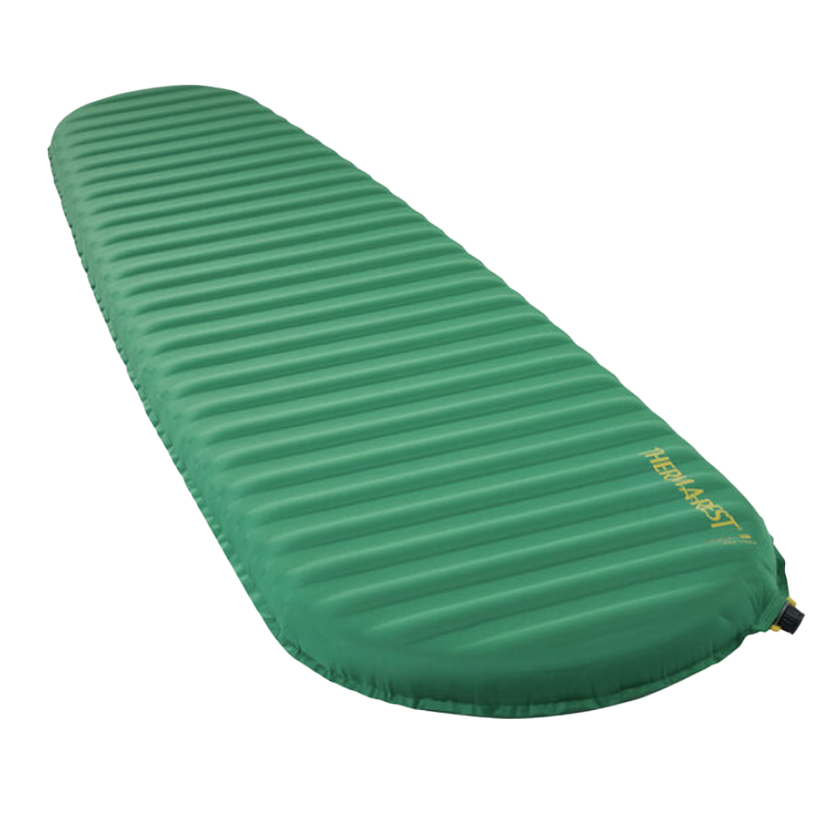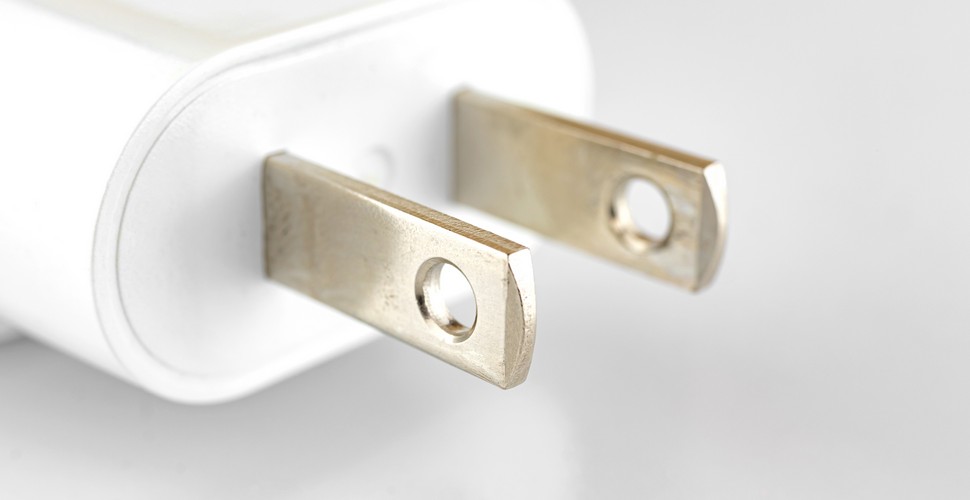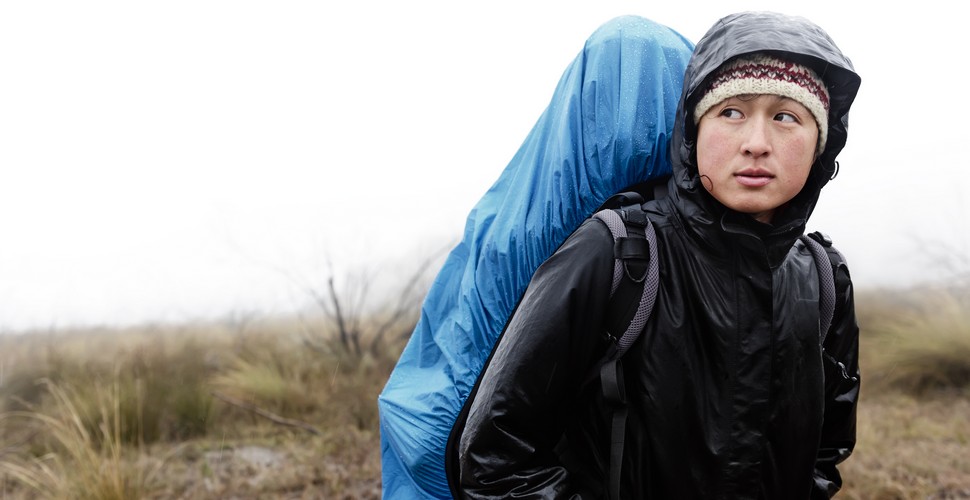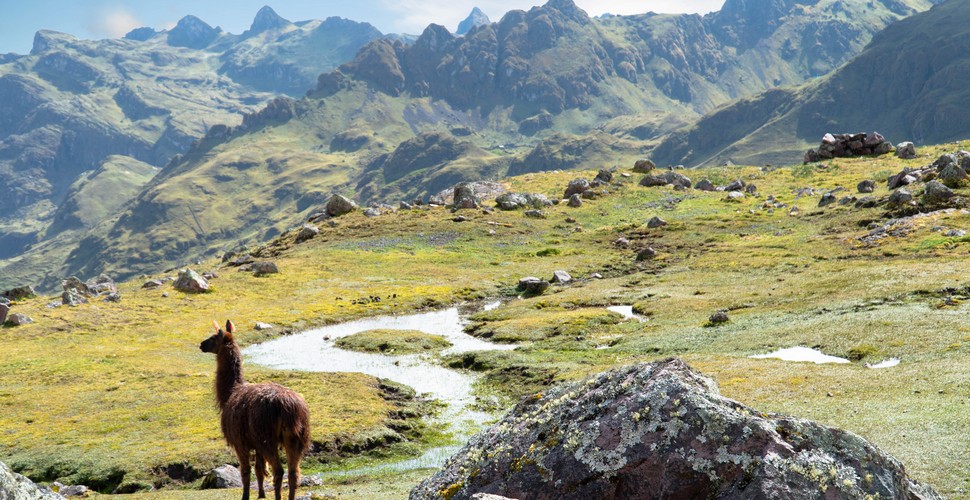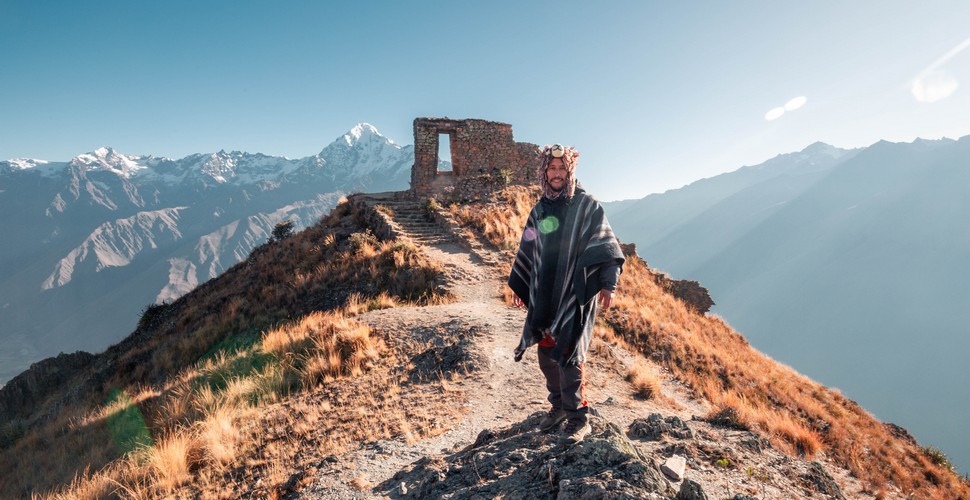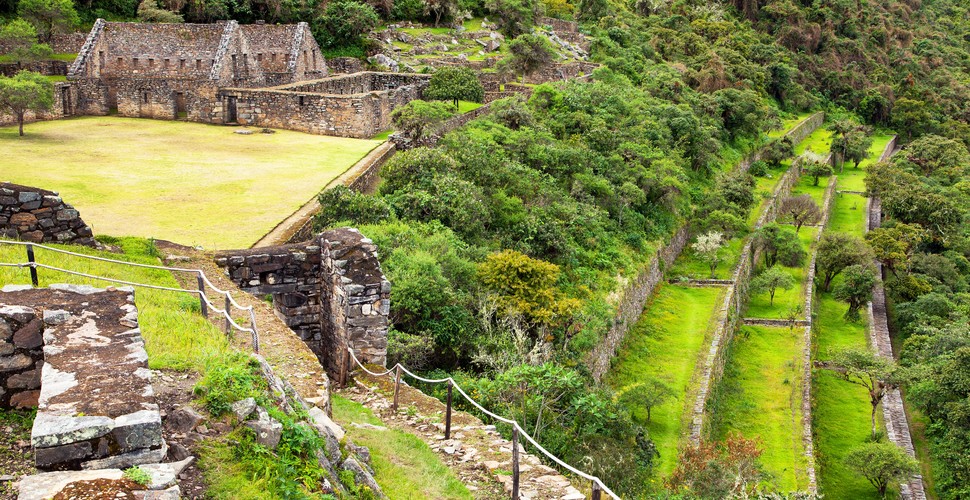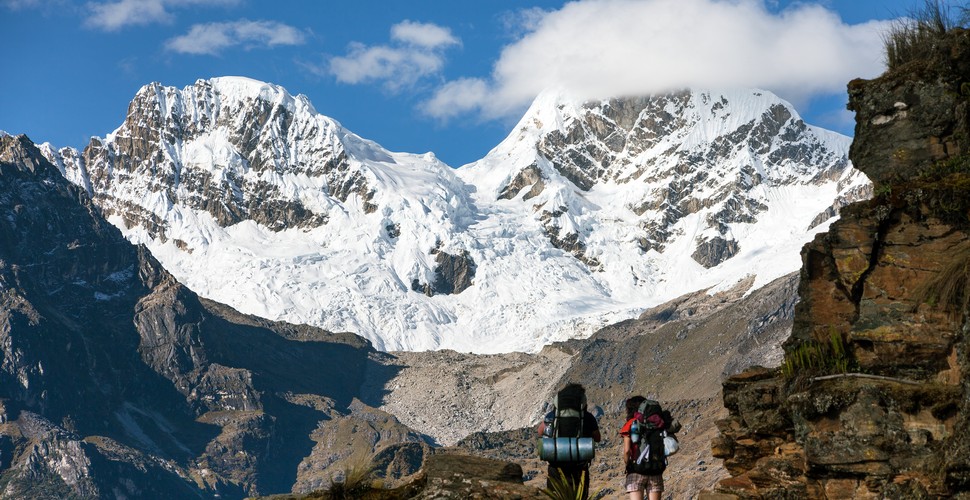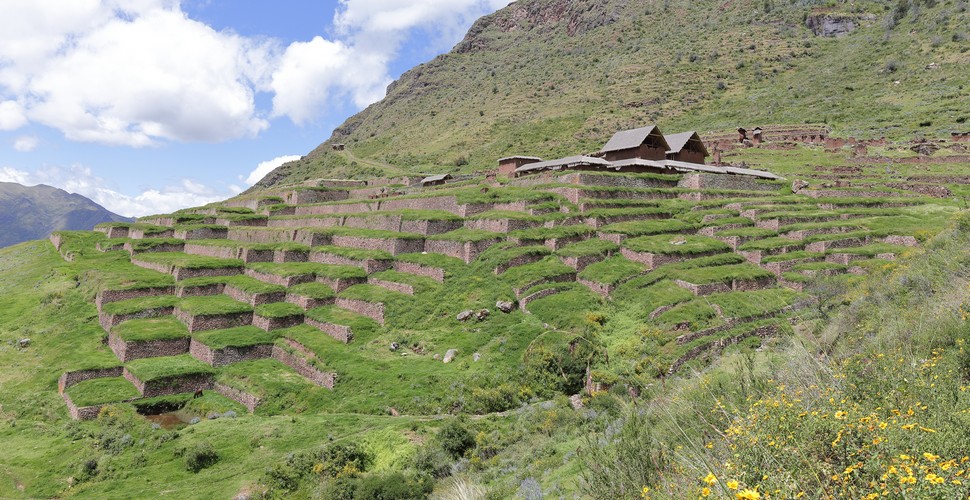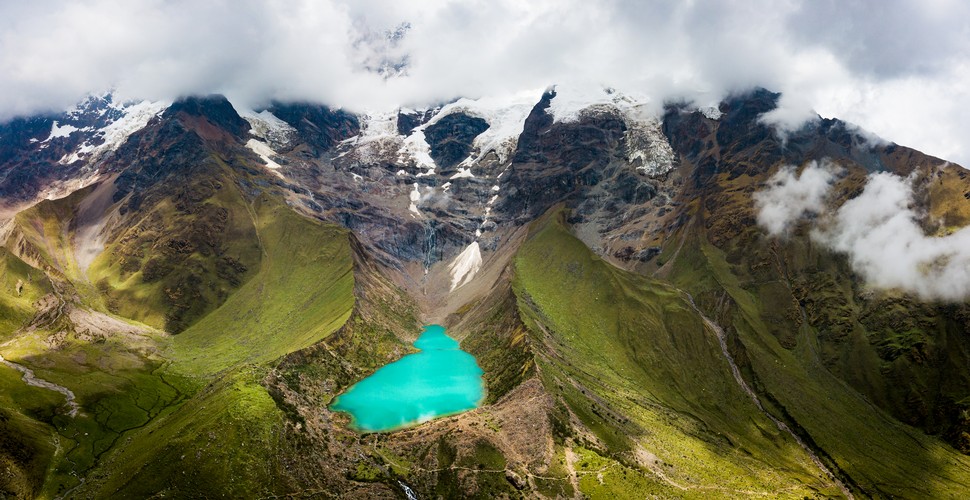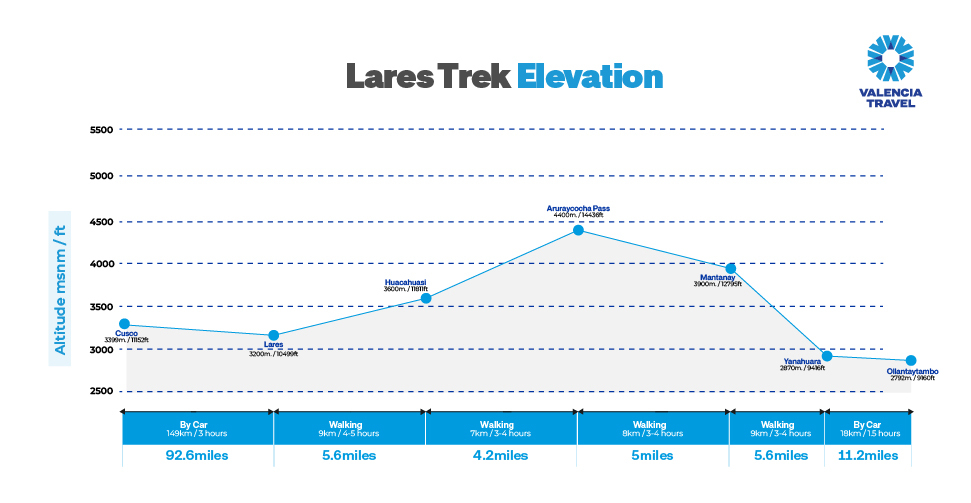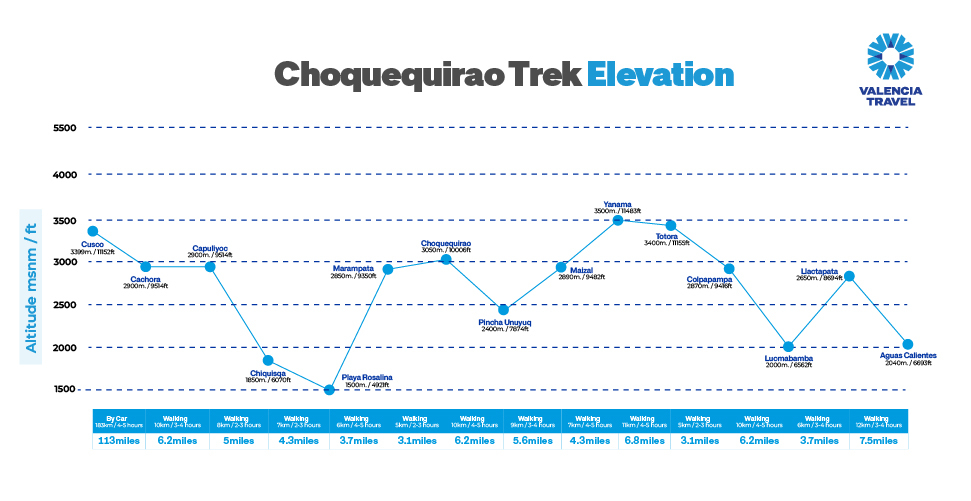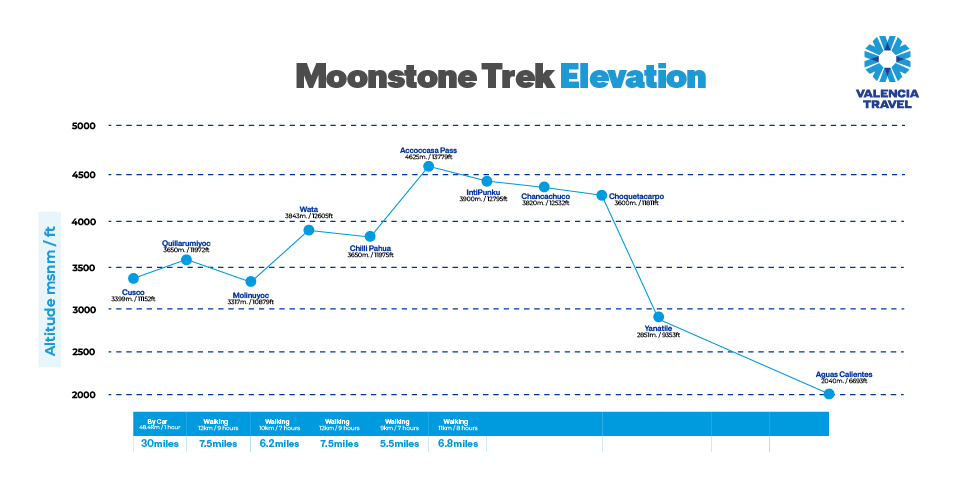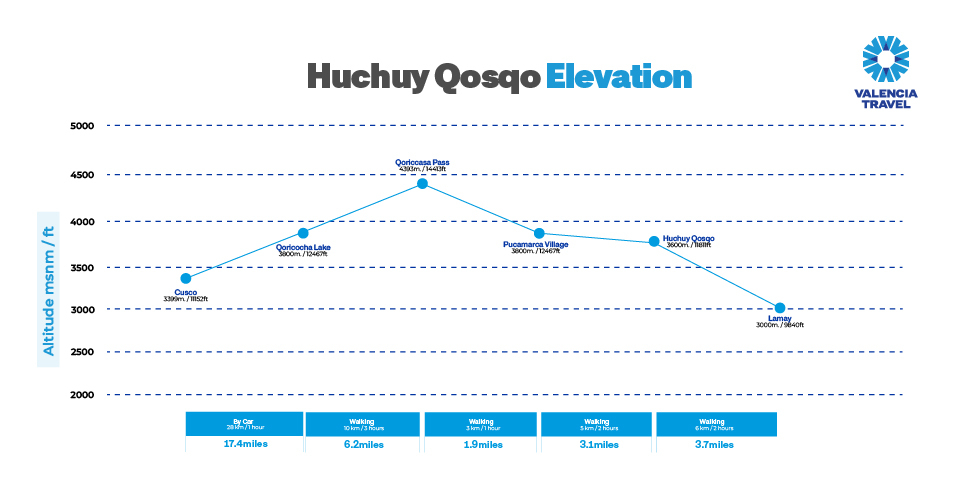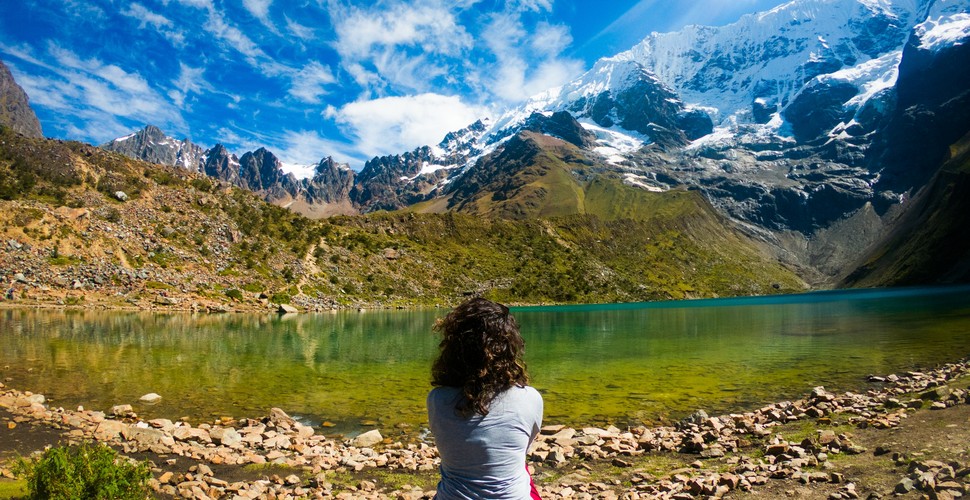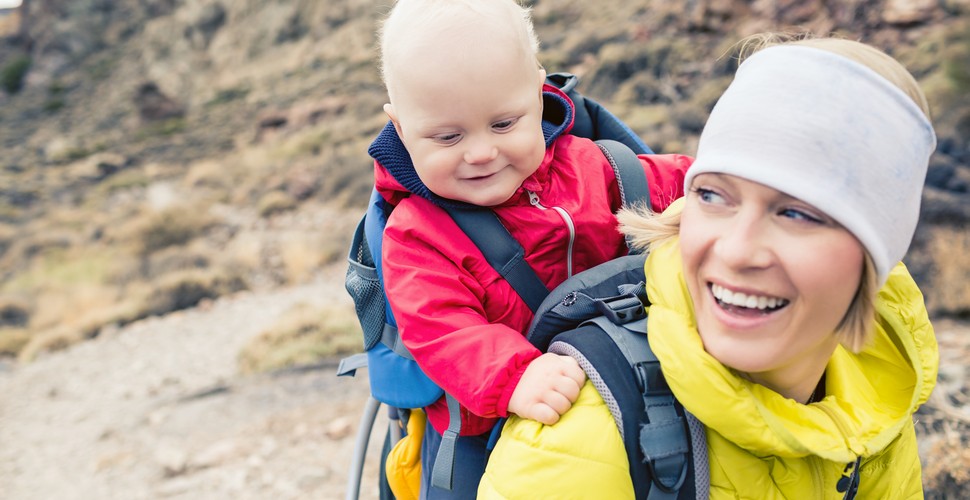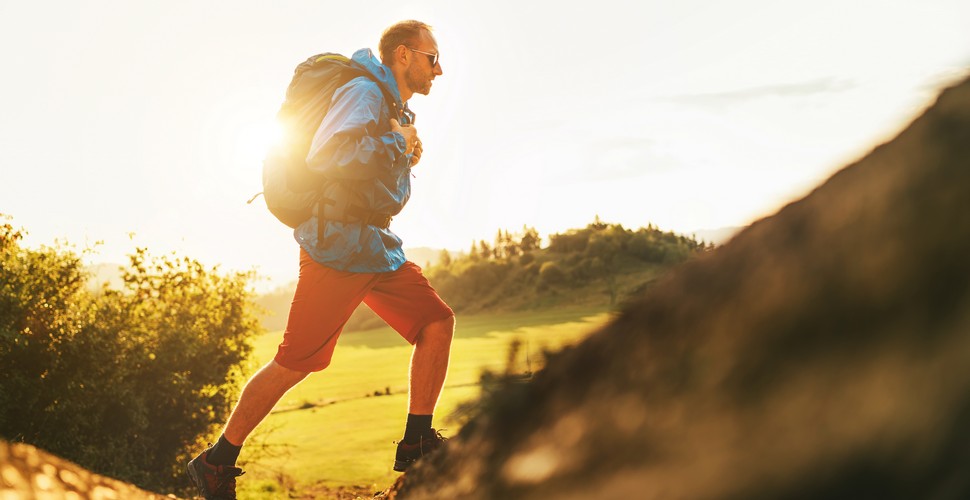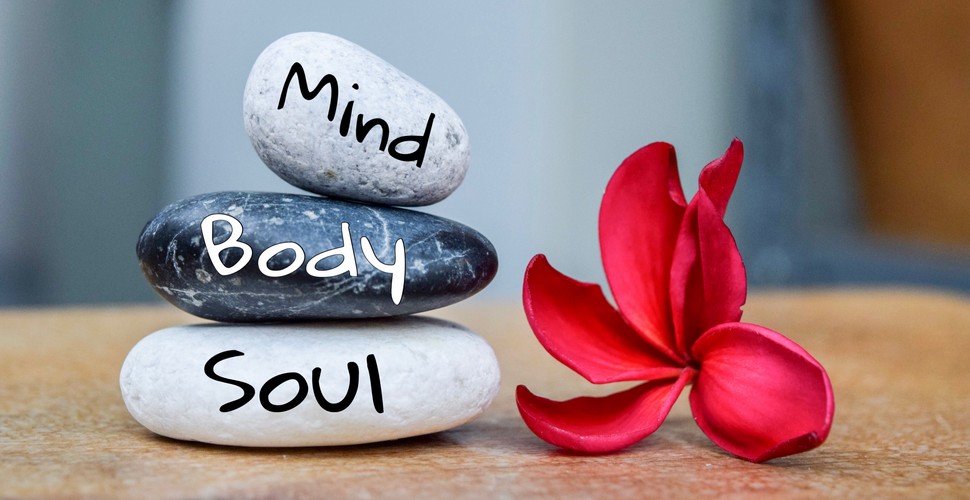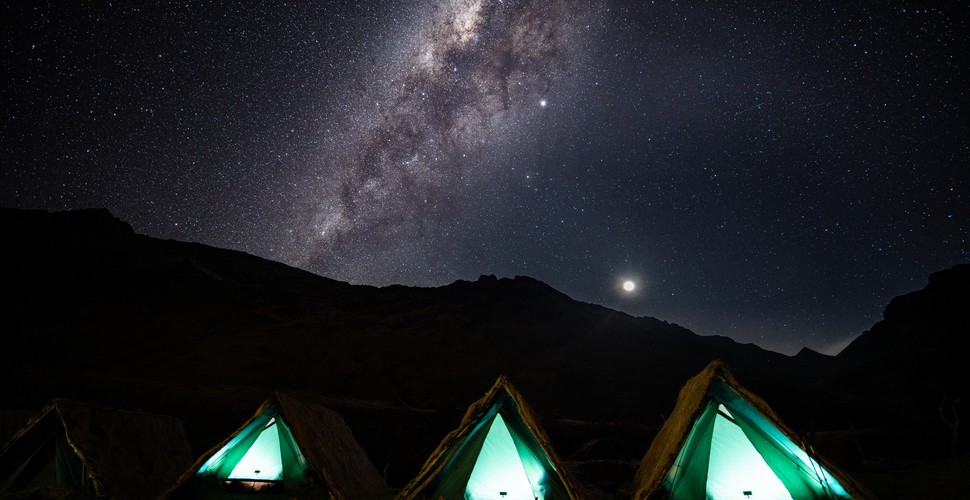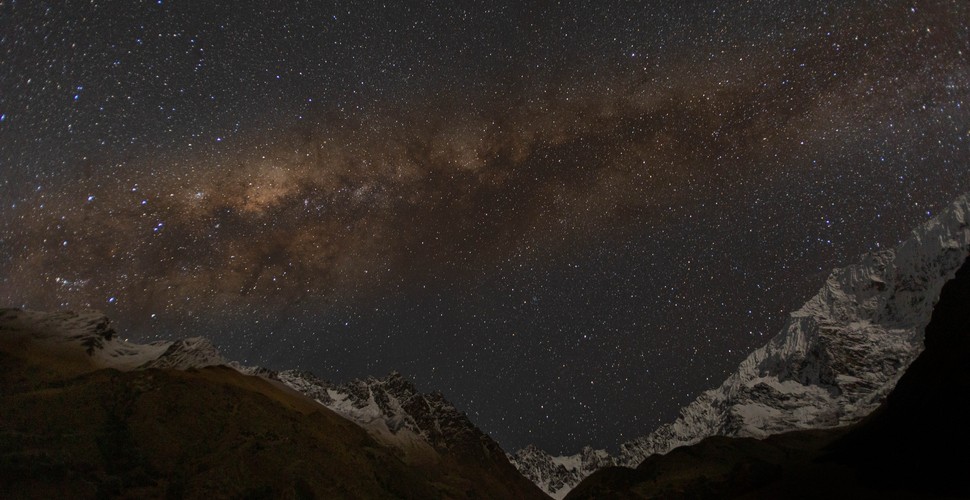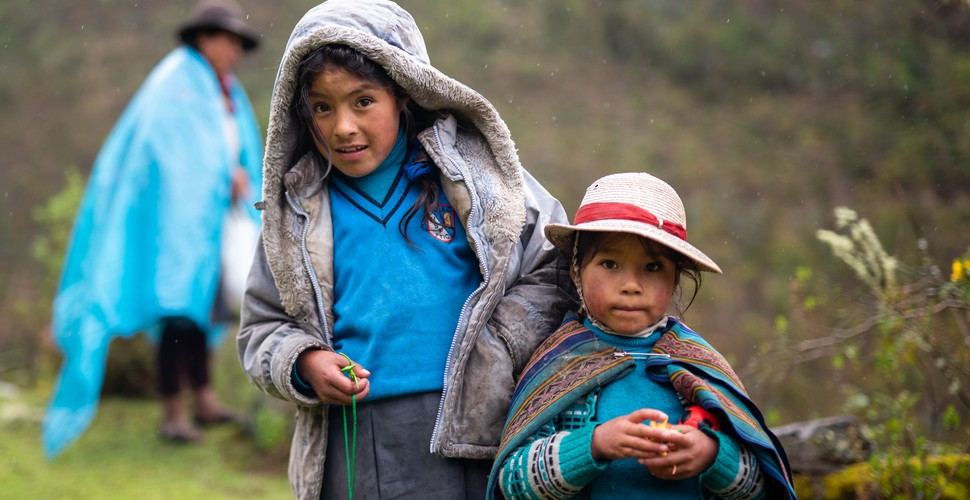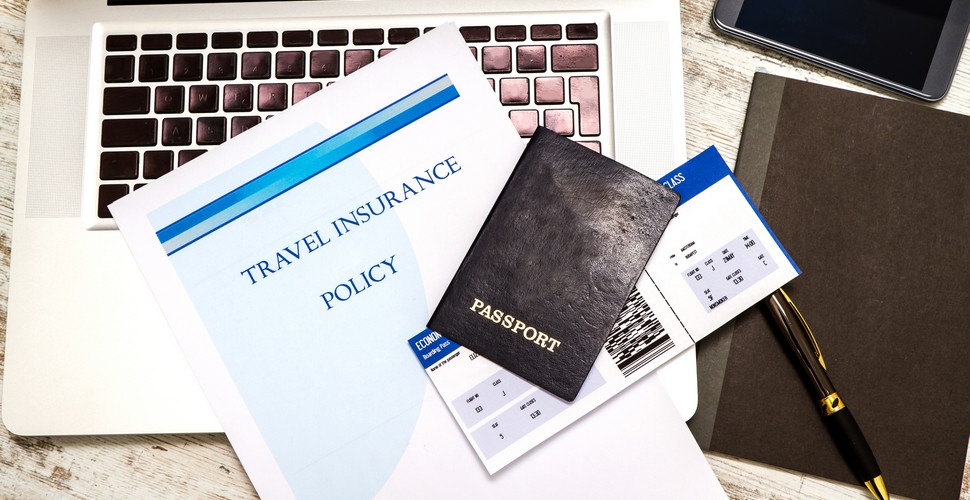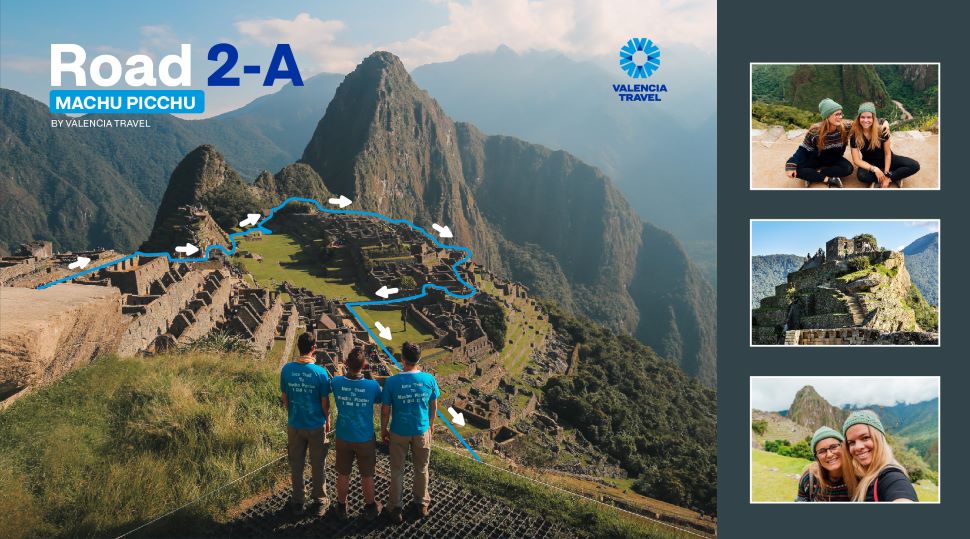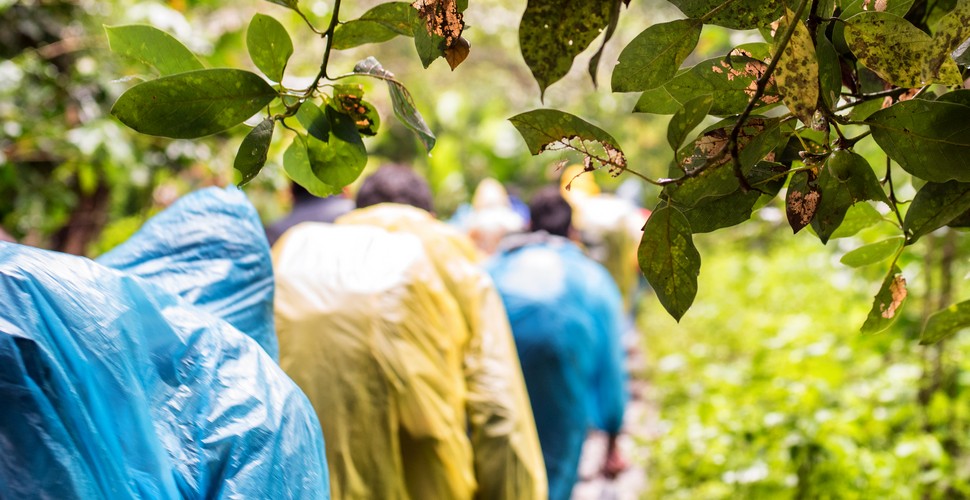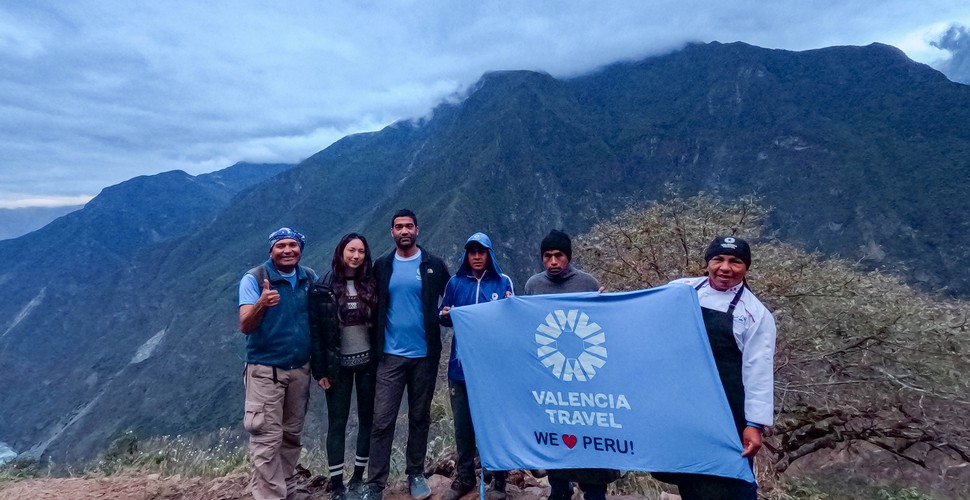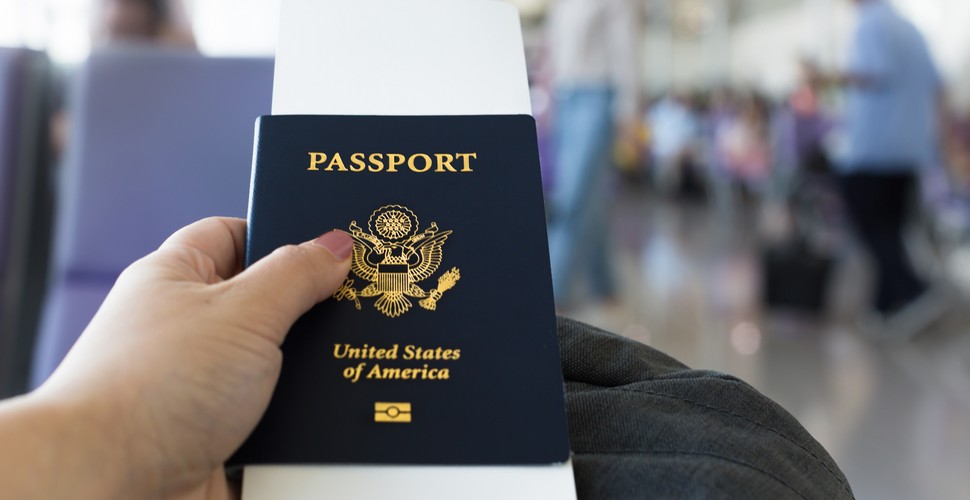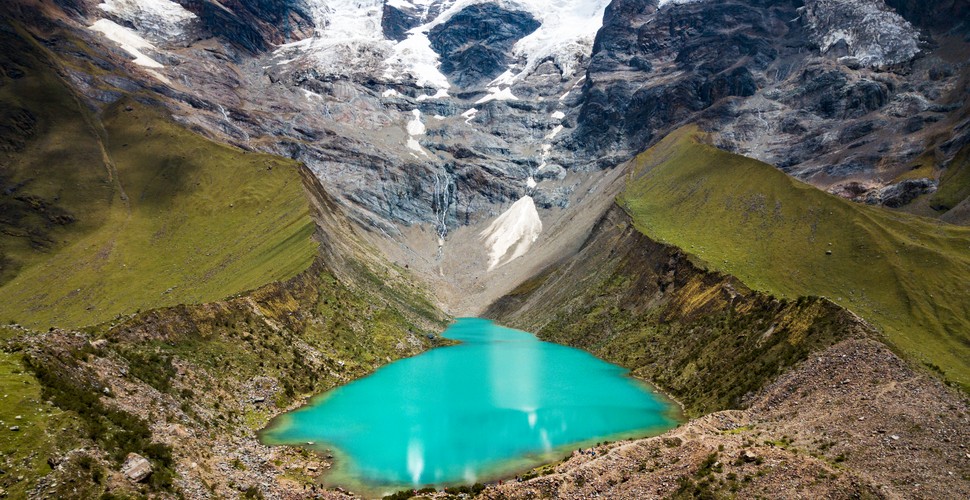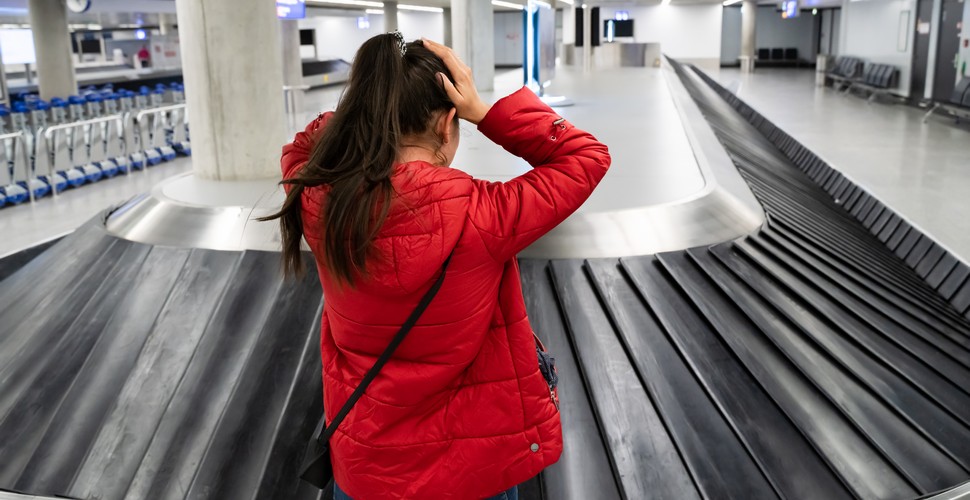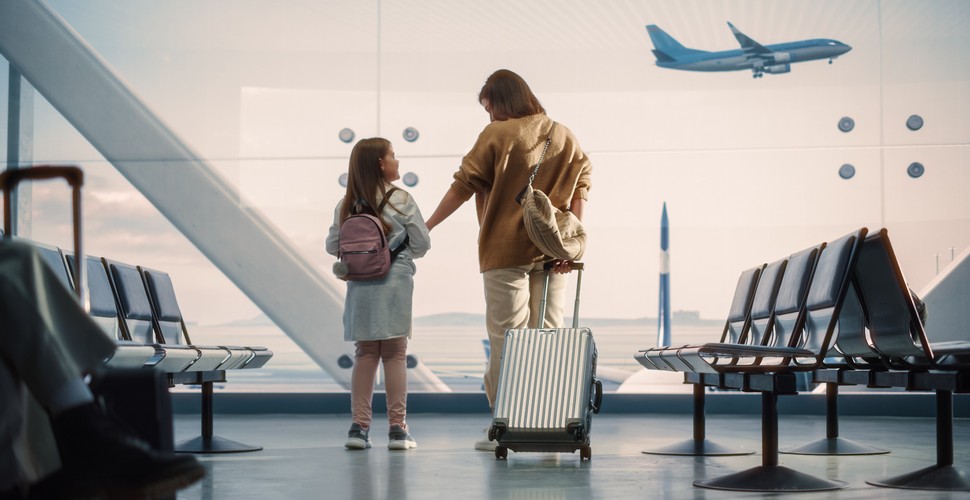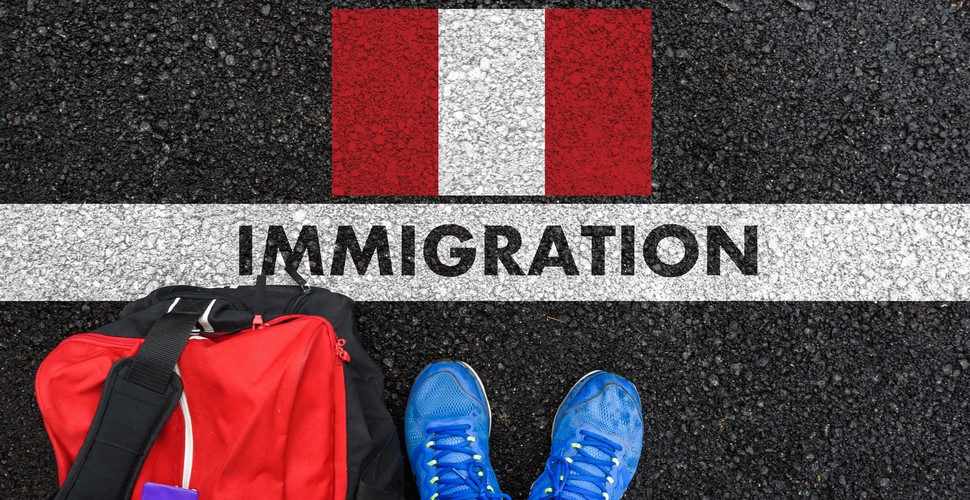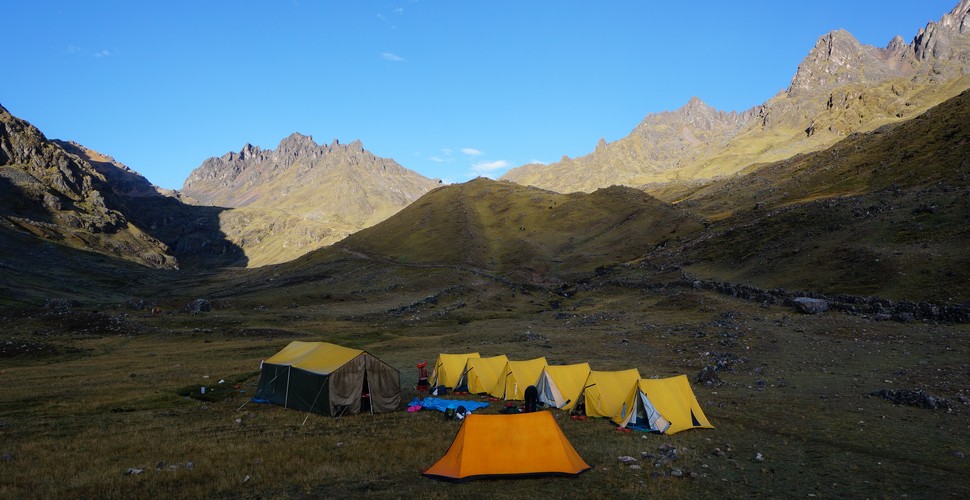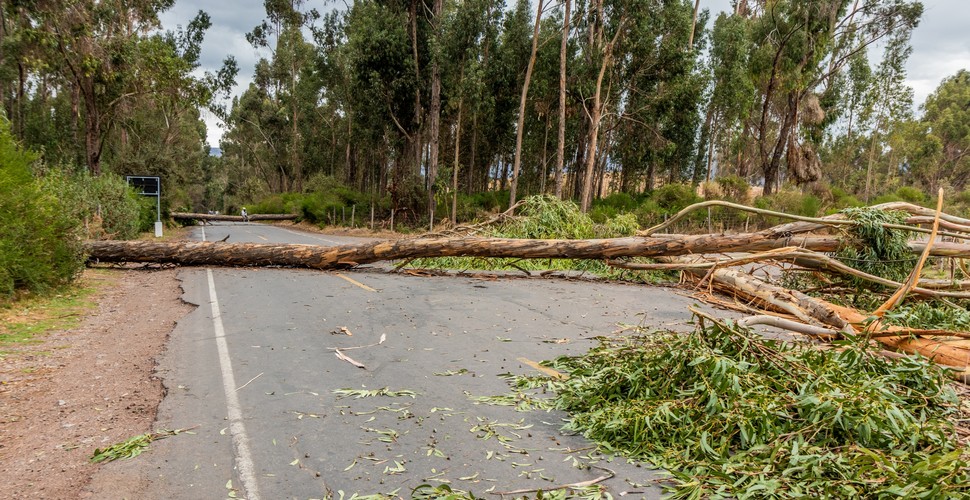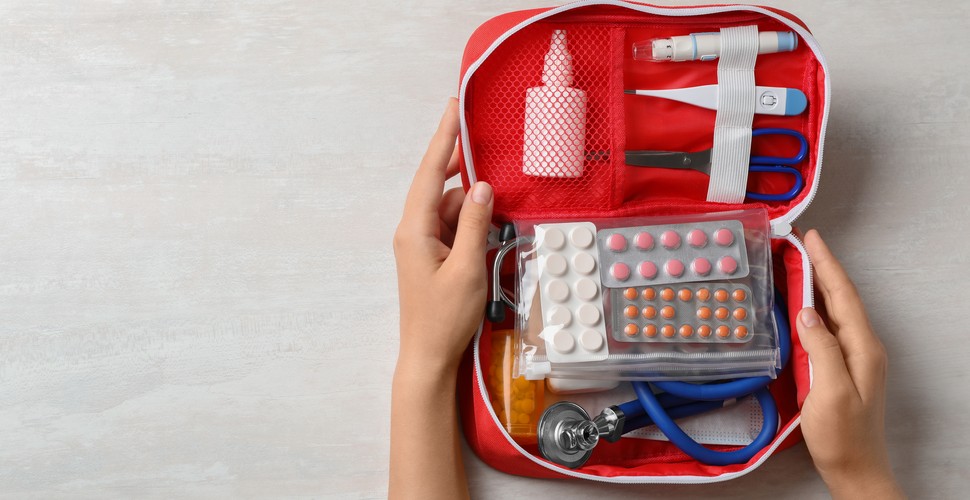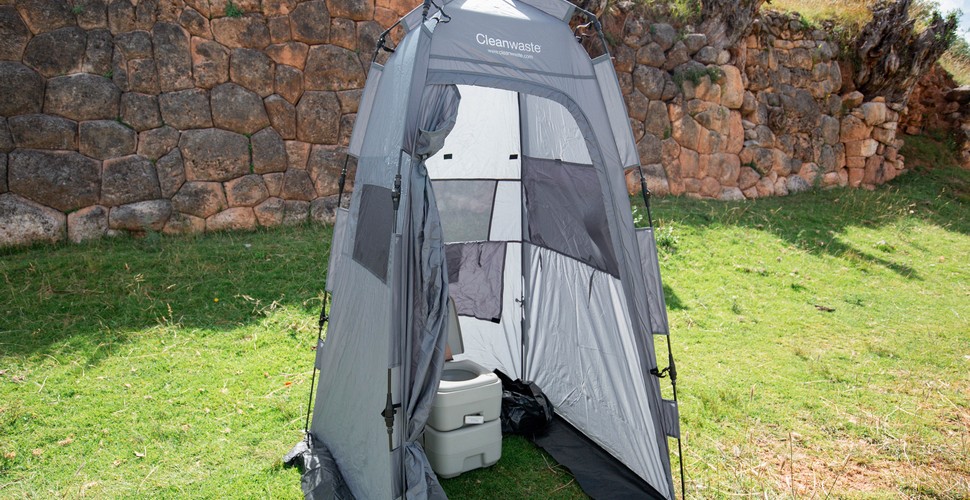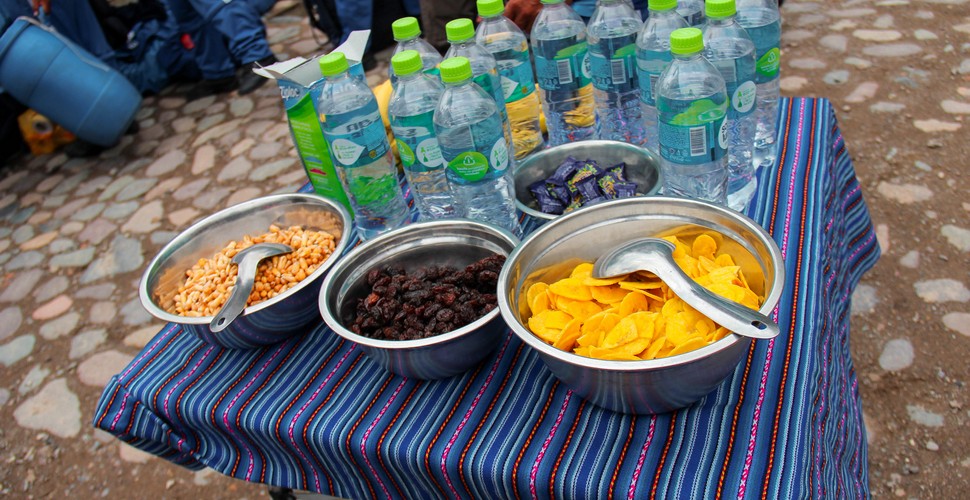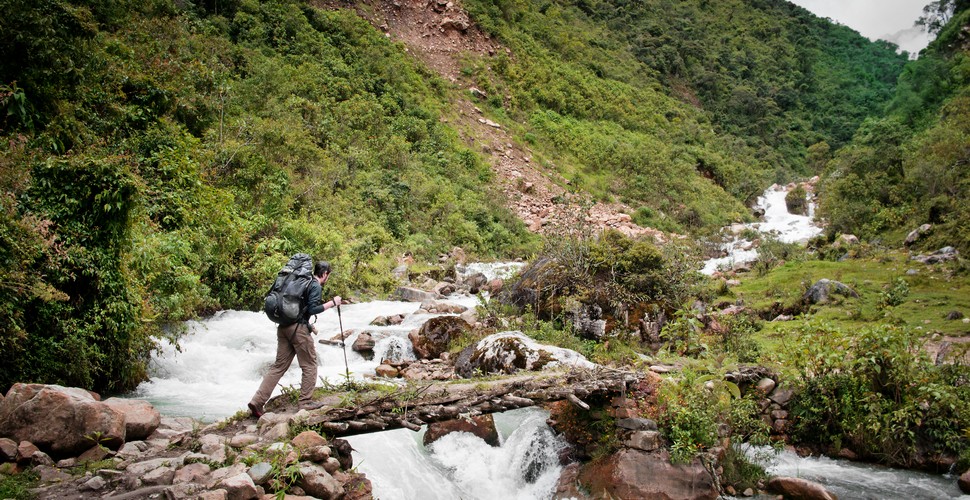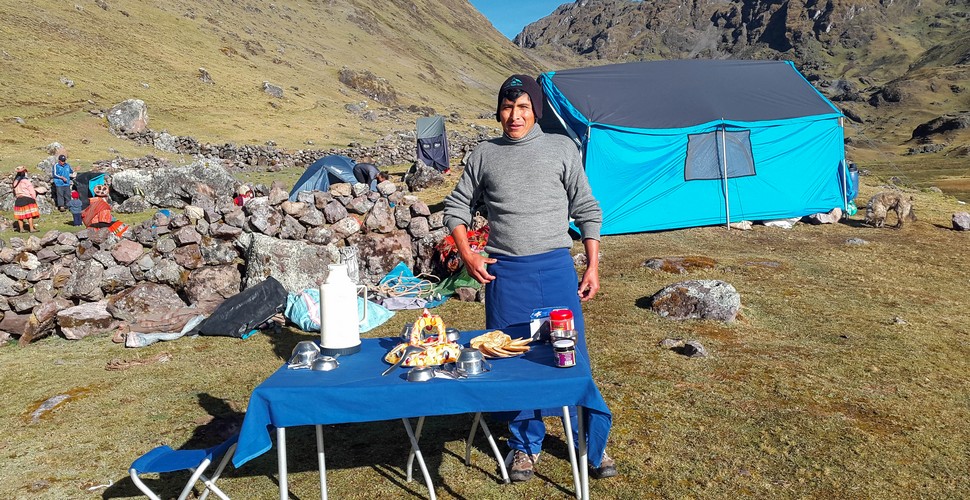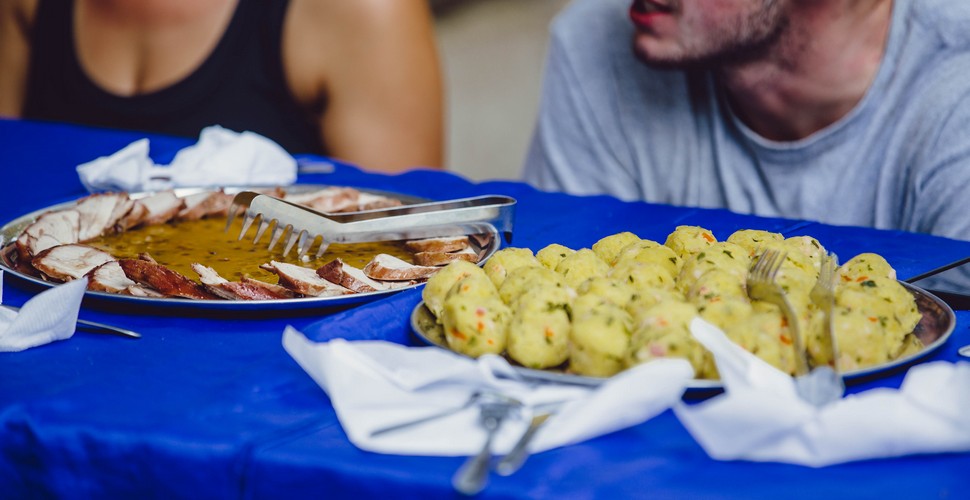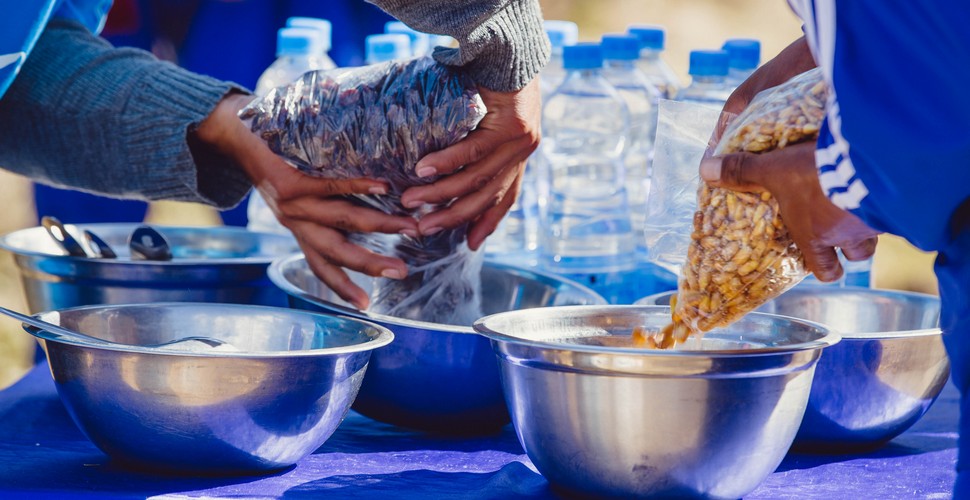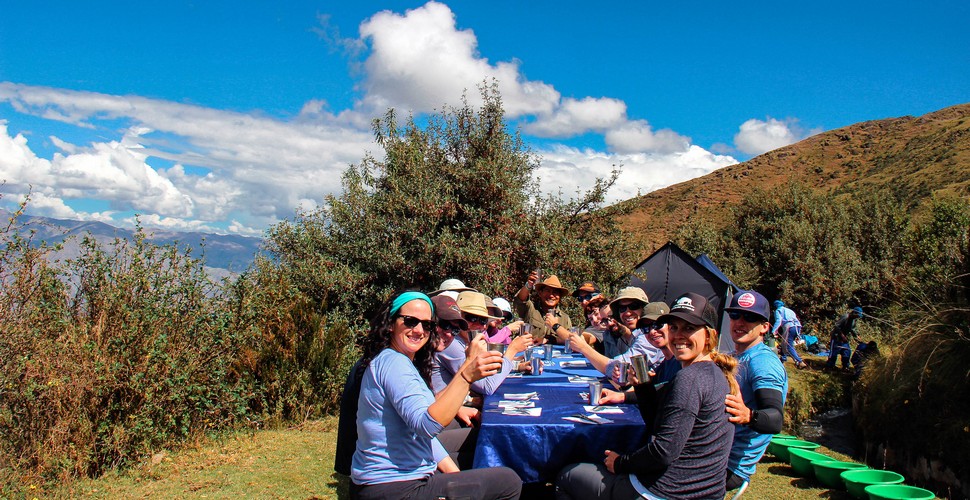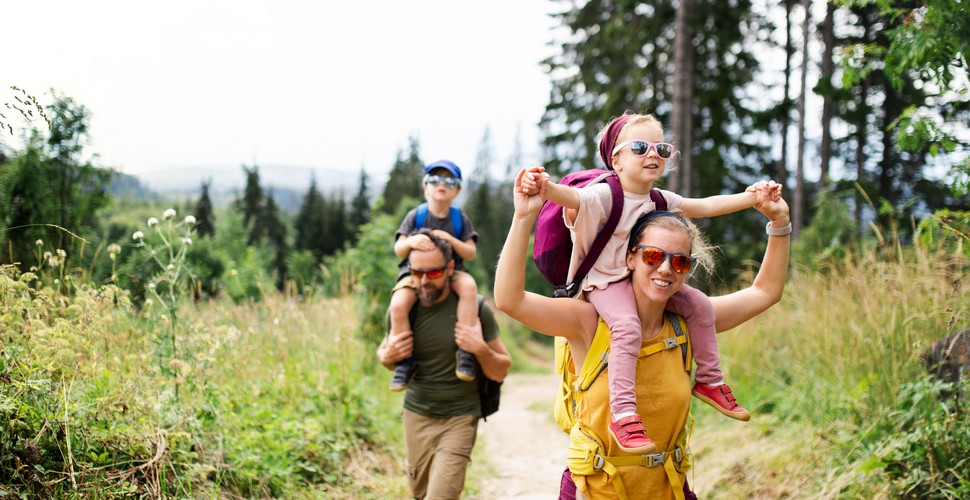
FAQs About Machu Picchu Treks
The Most Frequently Asked Questions About Machu Picchu Treks
How To Get to Cusco Peru?
Most people will arrive in Cusco by air from Lima International Airport. Please remember that the Cusco airport is for domestic travel only (with the exception being a daily flight to La Paz in Bolivia). If you come directly from overseas via Lima, you should collect your bags in Lima and re-check them for your flight to Cusco. Four airline carriers fly between Lima and Cusco. That includes LATAM Airlines, Star Peru, and SKY Airlines. They all offer similar schedules and in-flight service. We usually recommend LATAM airlines. They have the most daily departures and tend to be the most helpful when unexpected flight cancellations or delays occur.
Cusco Airport
What Are Alternative Treks /Machu Picchu Treks?
Machu Picchu Treks are considered "Alternative Treks" but what is an alternative Trek? An Alternative Trek is a Trek to Machu Picchu which is NOT the Classic Inca Trail. The Inca Trail has limited accessibility due to the restricted number of trekkers who can do the Inca Trail Hike each day. Alternative treks first became popular among those who were not able to secure an Inca Trail permit. Now, trekkers actually prefer the advantages of these alternative treks such as The Lares Trek or Choquequirao Trek to Machu Picchu. There are fewer people, mules can carry the necessary camping equipment, you don´t need a permit, and these routes offer a more authentic trekking experience in Peru. Alternative treks to Machu Picchu are different ways to reach Machu Picchu that often offer better scenery, more community interaction, and a remote, pristine trekking experience to the wonder of the world, Machu Picchu.
Mules on The Choquequirao Trek To Machu Picchu
General Machu Picchu Treks FAQs
When is the best time to Trek to Machu Picchu?
The dry season is generally considered to be the best time for a trek to Machu Picchu. The dry season lasts from April to November, and the wet season is from December to March. June to September are the most popular months to hike to Machu Picchu, due to summer vacations in Europe and the US. It is generally thought that May and October offer the best weather conditions. The shoulder seasons (April and October) see fewer people and reasonably decent weather conditions if you are looking for a more remote experience, with fewer trekkers.
Rainfall and Temperature Chart For The Choquequirao Trek
What are the Advantages of Hiking to Machu Picchu?
Fewer Trekkers
Machu Picchu Treks offers more remote trekking to get to Machu Picchu. It is probable that you will hike without seeing another trekking group! The roads are not crowded with tourists, and you will visit places that can only be reached by foot.
Natural Beauty
For those interested in nature, there a many impressive treks to Machu Picchu that are considered more beautiful, mainly due to their remote location. You can head from the high mountain tops to the lower cloud forests on the same trek (The Choquequirao Trek for example) and pass through a variety of ecosystems that are the natural habitat for delightful animals, birds, and plant species.
The Stunning Humantay Lagoon
No Permits are Necessary
Unlike the Inca Trail, you do not require a permit to hike Machu Picchu Treks. This means there are spaces to hike even if you book at the last minute! We do recommend, of course, booking in advance to prepare the perfect Machu Picchu Trek for you!
You can experience The Small Andean Communities
Along the Lares Trek, you’ll see different people living a very different way of life. It can be a real eye-opener to see people in their day-to-day lives. Seeing their tiny homes and surroundings is unique, especially when you see the houses of those who live up in the highlands!
Breathe in the Pure Andean Air
Treks to Machu Picchu have fresh air like you never have experienced in your life. You’ll breathe in the pure air when you reach Humantay Lagoon or along the Huchuy Qosqo Trek. There is zero contamination at this elevation, and ironically, even though there is less air than at sea level, it is optimum 02. All about quality not quantity, right?
You Will Visit Natural Wonders Along The Varios Treks to Machu Picchu
Humantay Lake is a popular day hike from Cusco. This lake is one of the most stunning lakes and landscapes you’ll ever see The Humantay Lake sits in the mountains surrounded by snowy peaks and is the color turquoise defined, amid the spectacular countryside.
There Are Relaxing Hot Springs En Route
Cocalmayo thermal springs are an option along many treks to Machu Picchu. You won’t reach them until you are in the lower elevations and warmer climate. After so many days of hiking, resting your legs and recharging for the next day is just what the Doctor ordered. The hot springs are located in the surrounding mountains with a gushing river by the side. The Lares Trek also begins in the high-altitude hot springs of Lares town.
Experience Different Peruvian Ecosystems and Climates
Peru has many different microclimates, so it’s no surprise that you Will get to witness a variety of ecosystems and microclimates along the trail. From being up high in the icy, fresh mountains, hiking through the cloud forest, and trekking through the humid jungle, you get to see a wide range of flora and fauna. Check out our article about the nature and ecology of the Machu Picchu region for more information.
Nature And Ecology In The machu Picchu Region
What Was Machu Picchu?
Machu Picchu is one of the most popular tourist destinations in the world. However, Machu Picchu's original purpose is still unknown, though there are some interesting and convincing theories about Machu Picchu´s original purpose. Most archaeologists and historians agree that Machu Picchu was a sacred place, where its residents worshipped the natural elements, and other entities, animals, and stars, which they also considered gods, especially the Sun. The most popular theories are:
- 1. The Sacred City and refuge of the Inca Pachacutec
- 2. An Ancient Astronomical Observatory
- 3. The home of The Virgins of The Sun
- 4. An Agricultural Center
- 5. A combination of The Above.
Whatever theory you tend to align with, there is still an element of awe and fascination when it comes to Machu Picchu. This has to be the best reason to visit Machu Picchu for yourself on treks to Machu Picchu!
The History of Machu Picchu
Are Horses or Pack Animals Allowed on The Treks?
Pack animals such as mules, horses, and even llamas, to carry the camping equipment of trekkers are allowed on alternative treks to Machu Picchu. This is unlike the Inca Trail where the camping equipment has to be carried by porters. You also have the option to hire extra horses or mules to help carry your equipment during your trek to Machu Picchu. This can alleviate some of the load and make the hike more comfortable, especially for those who are not accustomed to carrying a heavy backpack or need to take extra weight during the trek. Photographic equipment for example.
Which is the Best Mountain to Climb Inside Machu Picchu for Spectacular Views?
There are three principal ways to get high above Machu Picchu to take those amazing photos of Machu Picchu that you see on postcards, namely, Huayna Picchu Mountain, Machu Picchu Mountain, and The Sun Gate. Huayna Picchu offers views from a completely different angle than anywhere else making the photos unique. This climb inside Machu Picchu is not for vertigo sufferers due to the sheer drops, but the reward is spectacular views of the surrounding valley and Machu Picchu itself. Machu Picchu Mountain also offers impressive views and the hike is on wider pathways without the sheer drops. The path is also much less visited if you are seeking some time for reflection or to escape from the tourist crowds. The Sun Gate is where Inca Trail trekkers arrive at Machu Picchu for the first time. The views from the Sun Gate are stunning. All of these options require that you buy the specific permit that includes the climb you want to hike. Find out more about Machu Picchu circuits and which one includes the mountain climb you would like to summit here!
Huayna Picchu Mountain
Huayna Picchu and Machu Picchu mountain - Which one should I Climb?
Machu Picchu Mountain takes around 3.5/ 4 hours (there and back) and the distance is around 5.68 km (3.5 miles). Huayna Picchu takes 3 – 3.5 hours return, and the distance is 4 km / 2.5 miles. The trail leading up Huayna Picchu is very narrow with sheer drops, Machu Picchu Mountain is a lot wider trail without the scary drops. Both mountains inside Machu Picchu offer you a spectacular panoramic view of the surrounding mountains and the valley below. When you make it to the top of Huayna Picchu, you will be able to see the Machu Picchu ruins and Machu Picchu Mountain. Conversely, from the top of Machu Picchu Mountain, you can see the Machu Picchu ruins and Huayna Picchu is the backdrop. Therefore, you will find amazing spots to take your unforgettable photos at the top of either mountain inside Machu Picchu!
The View From Huayna Picchu
Trip Planning For Your Trek
Which Treks to Machu Picchu Require an Inca Trail Permit?
Most of these treks do NOT require an Inca Trail permit. However, there are 2 routes that join up with the Inca Trail and therefore DO require a permit. Unless you are choosing a combination hike that includes a section of the Inca Trail, you will not need a permit.
Inca Trail Permits
What are Valencia Travel´s Payment Methods?
When you are booking your treks to Machu Picchu, Valencia Travel Cusco, requires an initial deposit of 40% of the total cost of the trip. This 40%, is necessary for operational costs and is non-refundable should the trip be canceled by the client. The remaining 60% must be paid at least 30 days prior to your trip. Full payment is required at the latest, 30 days prior to your trip dates.
Here is How You Can Pay for Your Trek
1. Wire Transfer Terra Bank:
Registered company name: Valencia Travel Agency S.A.C Registered company
address: Portal de Panes 123 C.C. Ruiseñores of. 306 - 307 Cusco - Peru.
Company Number: 20490589857 Name of Director: Rene Hurtado Valencia
Bank Details:
Name of Beneficiary: Valencia Travel Agency S.A.C.
Address of Beneficiary: Portal de Panes 123 C.C. Ruiseñores of. 306 -307 Cusco - Peru
Bank Name: Terra Bank, N.A.
Bank Address: 3191 Coral Way Miami Fl 33145
ABA/Routing: 066012333
SWIFT: TBNAUS33
Account: #(U$D): 1297969406
Add approx. USD 15.00 to the amount you are sending to cover the transaction fee.
2. Payment with a Credit Card
We accept Visa, MasterCard, American Express, and Diners Club, payments can be made through our website. An additional charge of 4% is applied on the final amount of the tour as a result of using a credit card service and added to your bill. In case you need any assistance contact us to process your payment.
3. Western Union:
You can pay by Western Union at their office (they have offices internationally) or online (www.westernunion.com): Receiver’s first name: Rene Receiver’s last name: Hurtado Valencia City/Town: Cusco Country: Peru
Note: In the “message” space on the Western Union form, please write the name of your tour and your arrival date. Once you have made the transaction, please send us the tracking number (MTCN code).
Valencia Travel Booking Form Online
How Should I Pay the Balance for My Machu Picchu Trek?
Our payment policy requires that you pay your Machu Picchu Trek balance, 2 months before your departure date. This is so that we can pay the balance of the services associated with your trek. Third-party services, such as hotels, trains, guides, drivers, porters, etc. require advanced payment before your tour departs, which is why we ask for the balance payment prior to your trip departure. This ensures the smooth running of your trip. We are able to accept a bank transfer to our U.S. account and we accept most major credit cards. Please understand that credit card companies make it very expensive for us to process these cards, so we do charge a fee of 4% fee per transaction. You can also make your payments through Western Union if you prefer and we can assist you with this process. See more about Payment Methods here.
How Do I Get From the Airport to my Cusco Hotel?
On arrival at the Cusco airport, you will be directed to exit by the baggage claim area. You will need to exit outside from baggage claim and into the airport´s parking lot to find your Valencia Travel assistant. Our team Will be ready for your airport pick-up if you have the airport pick-up included in your Machu Picchu Trek or Machu Picchu package. Our staff will be holding a sign with your name on it (your group leader's name) so that you can see us in the many people waiting at the arrival’s door.
If there are any last-minute changes to your arrival details, please let us know AS SOON AS POSSIBLE. Our office numbers are as follows:
Valencia Travel Numbers:
- (USA / Canada): +1 860 856 5858
- Cusco Office: +51 84 255 907
- Peru: + 51 992 236 677
- Emergency: +51 979 706 464
Booking Your Trip
How Do I Arrange Cusco Accommodation on Arrival?
There are many different hotels to stay at in Cusco, the gateway to Machu Picchu. With over a million visitors each year the Inca city has about half a million people residents, so it can get crowded! Hotel accommodation will depend on your travel budget and holiday style so you can conserve your energy for the incredible treks to Machu Picchu, once properly acclimatized! Many of our recommended hotels are central and on plazas or pedestrian streets that are easily accessible for us to pick you up for your trek. With Valencia Travel, we will ensure that you have a worry-free, memorable experience on your treks to Machu Picchu and hiking along remote trails to Machu Picchu. We are also here to help you resolve any possible issues that may arise along the way. If you want to arrange hotels for your stay, please let us know at the time of booking your trek and we will offer you a selection of hotels to choose from, depending on your budget and preferred hotel category.
Can I Stay in a Hotel in the Sacred Valley?
Of Course! The Sacred Valley is often the best place to stay before and after your trek, other than Cusco. The Sacred Valley of The Incas is found at an elevation of 2745m /9,160 ft, (approximately, depending on where you are in The Sacred Valley) and is a great option for acclimatizing, as is Cusco at 3400m/11,152 ft. If you decide to stay in The Sacred Valley you are also closer to the trailhead for most Machu Picchu hikes so you will cut down on travel time. Briefings for the different treks are held in Cusco; however, a telephone briefing can be arranged if you are staying in The Sacred Valley.
Sacred Valley Hotel
Can I Stay an Extra Night in Aguas Calientes?
Of course! There may be associated fees to change the train times, depending on how much notice you give us. If you need us to secure your hotel for an extra night, or another Machu Picchu visit, there will be an additional cost. If you do choose to spend one more night in Aguas Calientes (the town below Machu Picchu), make sure you tell us as soon as you can to secure availability for entrance tickets, hotels, and train services. Find out more about the top things to do in Aguas Calientes here.
Where is Huayna Picchu?
The Huayna Picchu Mountain is the famous conical mountain inside Machu Picchu that appears in all the postcards and photos of Machu Picchu. On arrival at Machu Picchu, you have the opportunity to do some trekking inside Machu Picchu ruins on a climb up Huayna Picchu Mountain. This Machu Picchu hike offers spectacular views of the surrounding valley and the cloud forest below, as well as a different perspective of the Machu Picchu archaeological site. The only vantage point offering this angle. We do not recommend this climb for people who suffer from vertigo as there are sheer drops along the narrow trail. This is also for people who have a decent fitness level and are well-acclimatized. Remember, that you need a permit to climb Huayna Picchu, as places are limited, and you have to book the Huayna Picchu option along with your trek. Let us know at the time of booking if you would like this option!
The Huayna Picchu Hike
What is the Huayna Picchu hike?
The Huayna Picchu hike is a climb up a steep trail, including stone steps carved into the Huayna Picchu mountainside. The Huayna Picchu Mountain stands at 2700 m / 8858 ft. elevation. There is a cable to assist you as you climb up the steps. The hike up Huayna Picchu is challenging, to say the least, and the time allowed is 2 hours to summit the peak. Huayna Picchu Permits are required and you need to purchase the correct Machu Picchu ticket that includes this option. Entrance times are specified on your ticket. Let us know at the time of booking if you would like the Huayna Picchu option. This is a very popular climb and tickets sell out rely quickly as only 400 people are allowed to climb per day.
How Many People Hike the Huayna Picchu Mountain Summit in Machu Picchu?
Yes, many people want to climb Huayna Picchu Mountain inside Machu Picchu for the spectacular views from the summit. The vistas over the valley below, the surrounding mountains, and the Machu Picchu archaeological site are absolutely astounding! The Huayna Picchu climb however is tricky, and you should only climb if you have a decent fitness level and do not suffer from vertigo. The Huayna Picchu hike requires a permit and only 400 people are allowed to climb each day, in two shifts. 200 climb and when they have come back down, the second group can climb Huayna Picchu. Other trekkers hike the Machu Picchu Mountain instead, which is a longer hike, that reaches a higher elevation, but is more gradual and without the sheer drops! The views from Machu Picchu Mountain are on a par with those from Huayna Picchu Mountain. Find more information about Huayna Picchu Mountain check out our Huayna Picchu blog!
Huayna Picchu (Wayna Picchu) Signpost
Do I have to Hike Machu Picchu Treks with a Guide and a Tour Operator?
You can hike many of the treks to Machu Picchu without a guide or tour operator since it is not regulated by the Peruvian government. You should work out the cost of the logistics if you would like to go independently, including transport to the trailhead, entrance fees, mule hire, camping equipment etc. If you are willing to do this adventure without a guide you should respect the regulations on how to use the trail to preserve the environment. To go without a guide you must be well informed about the bus departure times, the cost is a minimum of s/. 12 soles, either minibusses or public service buses. Arriving at the trail you can often hire a muleteer to carry your backpacks. You should know that there are no facilities along these remote trails so you must bring your food for a number of days. There are certain times of the year when we would definitely trek with an authorized Peru Tour operator and these are generally in rainy season or shoulder seasons. Weather in the Andes can change without notice and can cause issues on your trek. A decent guide can make or break a trekking trip as they can offer valuable information about the region you are trekking as well as safety while trekking in The Andes.
The Valencia Travel Team!
Weather Conditions On The Trek
What Weather Should I Expect on My Machu Picchu Trek?
The weather on the different treks to Machu Picchu generally depends on the altitude you will be trekking at and the season. Higher-elevation trekking routes such as The Lares Trek and certain points on The 9 Day Choquequirao trek to Machu Picchu will experience colder and harder-to-predict weather due to the Andean microclimates. There will also be more chance of rain at the higher elevations even in dry season. Generally speaking, April to September is the dry season, and November to February is the rainy season, and March and October are considered the shoulder seasons – which means the climate can be unpredictable. Peru is in the southern hemisphere, so when it's summer in The USA and Europe, it is winter in Peru. June to August are the peak winter months in Peru, and November to February is summer. However, the rainy season in the Andes and the Machu Picchu region actually falls during the summer months, so although there are warmer temperatures, the weather is wet. The weather patterns have become more variable in the past few years, so we recommend that you prepare for sun and rain all year round. Mornings and evenings are always cold. Make sure you bring a fleece jacket for the mornings and a down jacket for the evenings. Once the sun comes up you should be comfortable on your treks to Machu Picchu in short sleeves. Long pants are encouraged to help from the mosquitos at the lower elevations of The Choquequirao Trek in Aguas Calientes and at Machu Picchu.
Temperatures and Rainfall on The Moonstone Trek
Packing Tips
Where Can I Store My Main Baggage While I Am on My Trek To Machu Picchu?
Here at Valencia Travel, we can appreciate that traveling in Peru involves taking a lot of baggage, especially if you are on an extended Machu Picchu vacation package. We provide free storage to all our customers who have booked their different treks with us, during their Peru visit. We have a safe storage facility where we store items of luggage bags and valuable items while you’re enjoying your Machu Picchu Trek! If you have any valuables or fragile items, just let us know beforehand so that we can take extra care, or store them in our safe. It is also common practice to leave your main luggage in your Cusco hotel storeroom. The hotels we use allow free storage while you are enjoying your Treks to Machu Picchu.
What Should I Pack For My Trek?
Packing for any hiking trip can be tricky, especially for those with no prior experience of what they might need out on remote treks in the Andes mountains. How to pack for the trek and knowing the backpacking essentials for multi-day treks often comes with experience, which is where we at Valencia Travel can assist you! We recommend doing a little research on your own, checking for the day-to-day temperatures and weather patterns, and packing accordingly for the different treks to Machu Picchu. This will most certainly save you a lot of space in the luggage you bring with you and will save on extra baggage fees from the airlines. On your organized treks to Machu Picchu the food, tents and other kit will usually be provided by the tour operator. So it is important to check the inclusions before you finalize your packing list. Here is our recommended Packing List as well as other important information about what to pack for your Treks to Machu Picchu.
Trekking Gear For Trekking to Machu Picchu
Do I Need Walking Sticks For Alternative Treks?
Walking sticks are always a trekker´s best friend. This is certainly the case on these treks to Machu Picchu. Most treks in the Andes have very uneven terrain that you will have to traverse. Using walking sticks on your treks to Machu Picchu helps you keep your balance, and take the pressure off your knees, especially during the downhill sections of steep trekking routes with downhill sections such as The Choquequirao Trek. All our walking sticks are expandable black diamond poles that can be collapsed smaller and tied to your bag when you are not using them. If your walking sticks have metal tips they are not allowed in Machu Picchu. For those who are bringing their own walking sticks, make sure they have rubber tips, or the Machu Picchu rangers will not allow them. Rubber tips can be purchased in Cusco if you forget to change the metal tips before you arrive in Cusco. Please note that airlines will not allow you to fly with walking sticks in your carry-on luggage, you must check them in your bags below the aircraft. The other option is to rent your walking sticks from Valencia Travel. This way you don’t have the hassle of taking them on international flights.
Note* Our 100% carbon fiber walking sticks are built to withstand four-season alpine terrain and are fully adjustable. This makes them easier to use, lighter, and more ergonomic. The Carbon Cork's namesake grip has also been updated with a soft touch grip to provide a comfy feel.
Features
- 100% carbon fiber shafts
- Soft-touch ergonomic grip top with 100% natural cork grip and EVA foam grip extension.
- FlickLock® Pro adjustability— featuring forged aluminum construction
- Solution strap for premium performance.
- Interchangeable tip, compatible with carbide tips.
What is the temperature rating for sleeping bags and mattresses available for rent from Valencia Travel?
Valencia Travel´s Sleeping bags are perfect for Trekking to Machu Picchu.
Specifications:
- Size: LZ to RZ
- Total Weight: 1,8kg/65oz
- Fill Weight: 280g/10oz
- Packed Size: 16cm x 25cm
- Temperature Specifications:
- Extreme: -15°C/5°F
- Comfort Limit: 2°C/36°F
- Comfort: 6°C/43°F
- Good Night’s Sleep: 0°C/32°F
Important Note*
Our sleeping bags are feather/down for those who are allergic.
Valencia Travel Sleeping Bag
A foam mattress is included on our treks. This will offer comfort and insulation from the ground. For extra comfort, you may want to upgrade to an inflatable sleeping mattress, which adds three inches of comfort on top of the foam mat we provide. (You will use both.) Our inflatable sleeping mattresses feature exclusive Atmos Foam to further reduce weight and boost compressibility. The ProLite is the lightest and most compact three-season mattress available. Self-inflation keeps set-up super-easy also.
Valencia Travel Sleeping Mattress
Is There Anywhere to Recharge Electronic Devices on The Trek?
Treks to Machu Picchu have limited places to charge your cameras and cell phones. Once you arrive at Aguas Calientes, you will be able to charge your equipment, but not before so please bring additional battery chargers and extra batteries on your treks.
What Type of Plug-In Sockets Does Peru Have?
Most hotels and even homes in Peru now have both the standard US socket and also the South American outlet. It is important to bring an adaptor that will allow you to plug in your devices than you plan to bring on your Peru vacation package. Peru´s voltage is 220 volts so double that in The USA for example, meaning that your devices will blow up. Peru primarily uses two types of plug sockets:
Type A: This plug has two flat pins, similar to those used in North America. However, due to the higher voltage in Peru, it's not advisable to use a Type A plug for devices designed for 110-120 volts. If your device is dual voltage (110-240 volts), you can use a Type A adapter.
Type C: Type C plugs are the standard European two-pin plugs, with round pins. Most modern hotels and accommodations in Peru are equipped with Type C outlets.
Type A Plug
What type of Day Pack should I Bring For My Trek?
Your daypack along with your hiking boots, are some of the most important items of kit you need to bring for your Treks to Machu Picchu. Fashion goes out of the window along the trail and the most important features should be comfort and design. Machu Picchu regulations only allow a maximum of 25L backpacks. If you exceed this 25L limit, the rangers will ask you to store your backpack at the entrance to Machu Picchu. Remember that your porters will carry 7 kgs for you, so try to carry as little in your daypack as possible.
• A good day pack should be Waterproof: waterproof. Many of them are not. If your favorite daypack isn’t waterproof, you can buy a waterproof cover.
• An adjustable backpack is vital. Check that they fit your body without restricting your movement or rubbing your shoulders and hips. The best manufacturers, like Osprey and North Face, design specific bags for women trekkers. They have reshaped hip belts that are wider, more molded, and narrower, but with broader shoulder straps. You will become “at one” with your daypack during your trek so make sure it fits you well.
Remember the focus is on packing light for your trek. Your main luggage will stay in Cusco, and your nighttime items will be carried by the porters in your duffle bag. Your day pack is only for the items that you need for that specific day´s trekking.
Rainy Mountain Trekking
How To Prepare Physically for Your Treks To Machu Picchu
What are The Day by day Hiking Distances and Hiking Times on the Salkantay Trek?
Day-by-Day Trekking Distances Along The Lares Trek
Day 1: 10 KM / 6 Miles. (4 hours Approx.)
Day 2: 14 KM / 8.69 Miles. (7 Hours Approx.)
Day 3: 7 KM / 4.35 Miles (4 Hours Approx.)
Day 4: Machu Picchu!
Llama On The Lares Trek
Day-by-Day Trekking Distances On The Moonstone Trek To Machu Picchu
Day 1: 10 KM / 6 Miles. (7-8 Hours)
Day 2: 11.5 KM / 7 Miles. (7-8 Hours)
Day 3: 10 KM / 6 Miles. (6-7 Hours)
Day 4: 7 KM / 4.50 Miles (3-4 Hours)
Day 5: Machu Picchu!
Inti Punku On The Moonstone Trek
Day-by-Day Trekking Distances On The Choquequirao Trek
Day 1: 12 KM / 7.5 Miles. (6-7 Hours)
Day 2: 16.2 KM / 10.07 Miles. (7-8 Hours)
Day 3: 12.3 KM / 7.65 Miles. (6-7 hours)
Day 4: 3.6 KM / 2.24 Miles. (2-3 Hours)
The Choquequirao Trek
Day By Day On The Choquequirao Trek To Machu Picchu (9 Days)
Day 1: 8 KM / 4.9 Miles. (5 Hours)
Day 2: 14 KM / 8.7 Miles. (8-9 Hours)
Day 3: 8 KM / 5 Miles. (3-4 Hours)
Day 4: 18 KM / 11. 2 Miles. (9 Hours)
Day 5: 12 KM / 7.4 Miles. (8 Hours)
Day 6: 12 KM / 7.4 Miles. (8 Hours)
Day 7: 20 KM / 12.4 Miles. (7 Hours)
Day 8: 18 KM / 11.19 Miles. (9 Hours)
Day 9: Machu Picchu!
View of The Apu Salkantay From The Choquequirao Trek
Day-by-Day Trekking Distances On The Vilcabamba Trek
Day 1: 5 KM / 3 Miles. (2.5 Hours)
Day 2: 17 KM / 10.56 Miles (10 Hours)
Day 3: 14 KM / 8.69 Miles (8 Hours)
Day 4: 23 KM / 14.3 Miles ( 5 Hours)
Day 5: Machu Picchu!
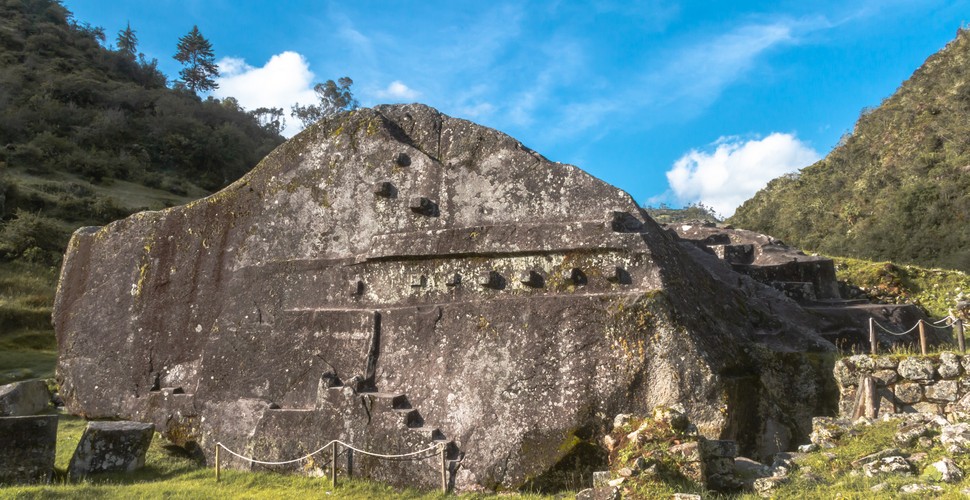
The White Rock On The Vilcabamba Trek
Trekking Distance On The Huchuy Qosqo Trek (1 Day)
Hiking: 15.3 KM / 9.5 Miles. (7 - 8 hours approx.)
Huchuy Qosqo Trek
Trekking Distance On Humantay Lake Trek (1 Day)
Hiking Time: 5 KM / 3.10 Miles. (2 -3 Hours
Humantay Lake Aerial View
Starting and Ending Points for Each Machu Picchu Trek
Where is the Starting and Ending Point of My Trek?
Machu Picchu Treks are often considered some of the best trekking routes in the world. They weave their way through Peru's stunning Andean landscapes, and they offer an unforgettable journey to Machu Picchu. Whether you are a seasoned adventurer or a novice hiker, the Treks to Machu Picchu are an experience that will leave you awestruck. To fully enjoy the remarkable treks in the region, it's crucial to understand the starting and ending points of the different Machu Picchu hikes. Here are the most common starting and ending points for our the treks to Machu Picchu.
The Lares Trek
Starting Point: Cusco
Trailhead: Lares Hot Springs
On any of our treks, we will collect you from your Cusco hotel at the pre-arranged time. We will travel in our private car to the trailhead for your Machu Picchu trek.
Ending Point: Machu Picchu.
The culmination of your Lares Trek to Machu Picchu adventure is, without a doubt, the awe-inspiring Machu Picchu. This ancient city, nestled high in the Andes, is the ultimate reward for your effort. As you approach Machu Picchu you will be awestruck by the beauty of the Inca Citadel leaving you breathless with its magnificence.
*Please note that the ending point of The Lares Trek is Machu Picchu, however, Valencia Travel always includes the transport back to your chosen hotel in Cusco.
Lares Trek Distances and Elevations
The Choquequirao Trek (4 Days)
Starting Point: Cusco
Trailhead: Capuliyoc
On all of our treks,we will collect you from your Cusco hotel at the pre-arranged time. We will travel in our private car to the trailhead for yourtrek to Machu Picchu.
Ending Point: Capuliyoc
The culmination of your Choquequirao Trek is, back in Capuliyoc. The ancient city of Choquequirao nestled high in the Andes, is the ultimate reward for your effort. This is a return journey to and from the Choquequirao Archaeological Site and you will return along the same trail, in and out of The Apurimac Canyon.
*Please note that the ending point of The Choquequirao Trek is Capuliyoc, however, Valencia Travel always includes the transport back to your chosen hotel in Cusco.
The Choquequirao Trek To Machu Picchu (9 Days)
Starting Point: Cusco
Trailhead: Capuliyoc
On any of our treks, we will collect you from your Cusco hotel at the pre-arranged time. We will travel in our private car to the trailhead for your Machu Picchu trek.
Ending Point: Hydroelectric
The culmination of your Choquequirao Trek is at Hydroelectric. From Hydroelectric we will take a short train ride to Aguas Calientes where you will spend your evening in a hotel. The following day is our Machu Picchu visit, after which we will take the train to Ollantayambo.
*Please note that the ending point of The Choquequirao Trek is Hydroelectric, however, Valencia Travel always includes the transport back to your chosen hotel in Cusco.
The Vilcabamba Trek to Machu Picchu
Starting Point: Cusco
Trailhead: Huancalle
On any of our treks to Machu Picchu, we will collect you from your Cusco hotel at the pre-arranged time. We will travel in our private car to the trailhead for your Machu Picchu trek.
Ending Point: Aguas Calientes
The culmination of your Vilcabamba Trek is Aguas Calientes. We will have our transport take you from Yanatile to Hydroelectric. We will then hike along the train tracks to Aguas Calientes. If you are tired after days of trekking, you can take the train from Hydroelectric to Aguas Calientes. The following day we will visit Machu Picchu.
*Please note that the ending point of The Vilcabamba Trek is Aguas Calientes, however, Valencia Travel always includes the transport back to your chosen hotel in Cusco after your Machu Picchu visit.
Choquequirao Trek Distances and Elevations
The Moonstone Trek To Machu Picchu
Starting Point: Cusco
Trailhead: Varpiso
For all our treks to Machu Picchu, we will collect you from your Cusco hotel at the pre-arranged time. We will travel in our private car to the trailhead for your Machu Picchu trek.
Ending Point: Machu Picchu
The culmination of your Moonstone Trek is Machu Picchu.
*Please note that the ending point of The Huchuy Qosqo Trek is Lamay, however, Valencia Travel always includes the transport back to your chosen hotel in Cusco.
Moonstone Trek Distances And Elevations
The Huchuy Qosqo Trek
Starting Point: Cusco
Trailhead: Qoricocha Lake
On any of our treks to Machu Picchu, we will collect you from your Cusco hotel at the pre-arranged time. We will travel in our private car to the trailhead for your Machu Picchu trek.
Ending Point: Lamay
The culmination of your Huchuy Qosqo Trek is in Lamay, in The Sacred Valley. Our private transport will be waiting in Lamay for our return journey.
*Please note that the ending point of The Huchuy Qosqo Trek is Lamay, however, Valencia Travel always includes the transport back to your chosen hotel in Cusco.
The Huchuy Qosqo Trek
Humantay Lake Trek
Starting Point: Cusco
Trailhead: Soraypampa
On any of our treks to Machu Picchu, we will collect you from your Cusco hotel at the pre-arranged time. We will travel in our private car to the trailhead for your Machu Picchu trek.
Ending Point: Soraypampa
The culmination of your Humantay Trek is in Soraypampa. After lunch, our private transport will be waiting for our return journey.
*Please note that the ending point of The Humantay Trek is in Soraypampa however, Valencia Travel always includes the transport back to your chosen hotel in Cusco.
Humantay Lake
How Hard Is the Trek?
For the average traveler or trekker, our treks to Machu Picchu are considered challenging yet doable hikes. Due to the physical demands, anyone who wishes to trek to Machu Picchu should at least be moderately fit. The different treks also require adequate acclimatization prior to the trek. Trekkers should spend at least 2 days in Cusco before the trek, to get acclimatized. Factor in a few extra days of acclimatization if you possibly can. This will mean a much better trekking experience along your trek. See our top tips for acclimatization in Peru, for more information.
Is There an Age Limit to Hike to Machu Picchu?
There are no government regulations on the age limit for trekking to Machu Picchu. Here at Valencia Travel, we believe that anyone with the correct mindset, attitude, good health, and fitness level and who is used to camping outdoors can hike a trail to Machu Picchu. We would recommend a private trek for families with small children, and extra mules so that they can help carry children when they get tired along the Salkantay Trekking route. These are long distances that we will be hiking so your infant or child needs to be used to hiking and camping. With regards to the older generation, we have operated the Salkantay Treks for people in their 70s, who were much fitter than the average teenager! We always recommend a health check-up with your doctor before you decide to hike to Machu Picchu. If the Doctor says yes, then so do we! So, age limits really do not factor into any of the treks to Machu Picchu.As previously mentioned, a positive mental attitude, health, fitness, and a spirit of adventure, are much more important than age!
Family Trekking On The Lares Trek
How to Keep Fit and Healthy During Your Trek
Machu Picchu Trek Preparation
Traveling to any destination anywhere in the world can be hard both emotionally and physically. Peru and South America are no exception; you need to take care of your health to enjoy your trek. Here are some handy tips for healthy travel and some advice to stay healthy during your Peru vacation packages.
Visit a travel clinic before you travel, your doctor will be able to give you the injections you need for the locations you wish to visit. Vaccines and medications are one of the best ways to protect yourself while traveling. Vaccines for Hepatitis B, Typhoid, Cholera, and traveler's diarrhea are the most common you will need when traveling to Peru to hike.
Pack a Decent First Aid Kit
You may think that you do not need this but this is an essential part of your trek. Take the essentials like anti-diarrheal medication, antihistamines, anti-motion sickness medication, pain relievers, laxatives, antacids, anti-bacterial ointment, hand sanitizer, band-aids, cream for sunburn, and rehydration salts. If you don’t need them then great, but it is better to have them!
Travel Insurance, we all know when we are traveling, this is an extra expense that you might not want to spend but a basic policy is essential when you trek to Machu Picchu. Should something happen, you can at least rely on your policy to help get you home. Without it, you may be in serious trouble during your trip to Peru.
Build up your fitness level with aerobic training, or cardiovascular training. This refers to activities that use oxygen to adequately meet the demands of exercise through aerobic metabolism and should be the focus of your preparation for treks to Machu Picchu. Swimming, running, and hiking, are all good ways to prepare for your Machu Picchu Trekking experience.
Mental Preparation. Training for your trek is as much about your physical endurance as it is about your mental stamina. There will be points where your trek will be particularly tough, usually on the trails up to high passes. Despite tired legs and sore bodies, you will need to be able to dig deep to push yourself up and over those high mountain passes. Make sure you have a good mental attitude before arriving in Cusco. That means preparing yourself mentally for a real challenge. There is a reason why many people see trekking to Machu Picchu as the ultimate challenge!
Day Treks at Home Before Your Trek
During your Trek
Water. Anywhere you travel in the world you need to be careful with the drinking water. Normally what most people do is buy bottled water, this is the best idea but make sure that the seal is intact. On the different treks to Machu Picchu, the drinking water is pre-boiled making it potable. Take your refillable water bottle and we will refill it with drinking water for the day! Taking purification tablets with you is a good idea if you feel that you will not be able to get bottled water, the taste is a little strange but it is better than getting sick. Hot drinks also are the way to go, as you know that the water has been boiled on your trek.
Eat healthily and in reputable restaurants to avoid illness that could take away valuable travel time on your trip to Peru. Wait until after your trek to try or experiment with the local cuisine and try all of the delicious dishes on offer in Peru.
The Altitude. Take it easy when you arrive in Cusco for your trek and drink plenty of water. Do not take the altitude lightly this can make you feel bad and you do not want to spoil your trek to Machu Picchu. Do nothing more than stroll around for the first few days until you feel your breathing is normal and you are used to the thinner air. After a couple of days do some day hikes around the local archaeological sites or some mountain biking in The Sacred Valley, as great preparation for trekking to Machu Picchu.
Save the parties and drinking Alcohol until after your Machu Picchu Trek your body will thank you for it. Alcohol can cause terrible hangovers at altitude and should be avoided, at least while you are acclimatizing 😊. Save the Pisco Sours as a celebration for after completing your impressive Machu Picchu Trek.
The top-end hotels throughout Peru usually have decent gyms and excellent spa facilities to help you keep fit and well during your stay. There are a number of wellness options for those who are looking to maintain a healthy lifestyle during their Peru vacation package, ask us at Valencia Travel for more information on wellness options before or after your Machu Picchu Trek.
Relaxing and Acclimatizing - the best preparation for Trekking!
Staying for Long Periods of Time in Peru.
If you plan to stay in Peru for a while, there are plenty of hiking options to help you keep fit. There are a number of hiking clubs in Cusco for example, where you can keep fit and also enjoy some of the more off-the-beaten-track trekking routes in the company of other trekkers after your Machu Picchu Trek.
You can also sign up for a local gym if you want to maintain your fitness regime from back home. Explain to a trainer how long you have been traveling in Peru or have been at high altitude, to make sure you are not over-exerting yourself, especially in Cusco or other high-altitude cities.
The top-end hotels throughout Peru usually have decent gym facilities and excellent spa facilities to help you keep fit and well during your stay. Use them after your Machu Picchu Trek if you plan to hang around in Peru.
The Night Skies On Your Trek
Are there Decent Star Gazing Opportunities on The Trek?
You will be trekking in the southern hemisphere so the night skies will look a lot different than the skies in The Northern hemisphere. The constellations are very different in each hemisphere meaning you can see constellations such as The Southern Cross and The Inca Constellations! Peru´s diverse geography, from the towering Andes Mountains to the sprawling Amazon rainforests, offers a unique opportunity to witness breathtaking astronomical events, especially along remote Machu Picchu Hikes, where there is no light pollution. Peru´s skies are among the clearest you will ever witness especially along the unpolluted treks to Machu Picchu, offering the best opportunity to see incredible astronomical events with your own eyes. Explore the Andean region on your trek while camping each night for optimal stargazing. The Skies are clear with zero light pollution offering remarkable sky viewing and star gazing, especially in the dry season from April to October.
Lares Trek Campsite at Night
Did The Incas Practice Astronomy?
People have long been fascinated with stars, and have tried to find meaning in what they saw in the night sky. The Inca civilization in Peru is no exception and they placed great importance on astronomy. They were the only culture in the world to define constellations of both light and darkness. The Incas not only identified constellations and individual stars, but they also assigned each a purpose. They believed that everything in and around our world was connected. The Incas had a grand empire stretching from present-day Colombia to Chile and a road system that connected the different regions. This included the Lares Trek to Machu Picchu. Worship was very important to them and they had a belief system that was closely related to astronomy. Astronomy was important mainly because of its relation to agriculture. The Incas planted and harvested at certain times of the year, guided by the nighttime skies. Machu Picchu and other archaeological sites have temples for the sun, moon, and other astronomical entities. These trekking routes offer excellent opportunities to view the skies each evening and your guide will be happy to point out constellations recognized by The Incas. You can witness how the stars guided the construction of Machu Picchu and why the Apu Salkantay and Ausangate were revered by ancient civilizations.
Constellations over The Vilcabamba Mountain Range
Sustainability and Responsible Travel on The Treks
Is Valencia Travel a Sustainable Machu Picchu Trek Operator?
Hike with local tour operators like Valencia Travel that have sustainability initiatives, such as waste reduction, renewable energy use, and low-impact transportation options. They should also employ local guides who can provide insight into the culture and ecosystem. Remember that many of the support staff such as chefs, muleteers, and Guides come from the local regions of the treks, so we are trying to offer sustainable job opportunities in the regions we trek. Find out more about how to be a Sustainable and responsible trekker here.
Our Sustainability Efforts
How To Reserve A Treks with Valencia Travel?
You can book a Machu Picchu Trek with a licensed tour operator. As your tour operator, will reserve your preferred trekking dates and will secure the dates necessary to hike and enter Machu Picchu at the end of the different Machu Picchu Hikes. You will need to complete a booking form that includes all personal details for you, and any other group members. You will pay a 40% deposit per person. This 40%, is necessary for operational costs and is non-refundable should the trip be canceled by the client. The deposits can be paid individually for each group member. Once we have all the deposits and details, we will then book your permits. You can pay by bank wire, credit card, or even via Western Union! Once we have secured your Machu Picchu entrance tickets, we will send you confirmation that everything is 100% set. All trekking dates, once confirmed, are guaranteed. You can see our detailed payment and cancellation policy here.
Valencia Travel Booking Form
The Comprehensive Cancellation Policy Guide
What Happens if I Need To Cancel My Trek To Machu Picchu?
In today's unpredictable world of travel, having a reliable trip cancellation policy is like having a safety net beneath your holiday adventures. Whether you're planning a dream vacation to Peru or an iconic hike along a Trek to Machu Picchu, unexpected circumstances can arise, and plans can quickly unravel. Here, we delve into the essential aspects of our trip cancellation policy, why they matter, and how they can offer you peace of mind in an ever-changing travel landscape. So, fasten your seatbelt as we embark on a journey to understand the ins and outs of safeguarding your travel investment.
If You Cancel Your Trek
At the time we receive a written notice, that you want to cancel your trip, the following fees will be charged:
- 30 to 59 days before departure date: 40% of trip cost
- 7 to 29 days: 70% of the trip cost
- Less than 7 days before departure date or no-show: 100% of trip cost
On all our Peru vacation Packages, Valencia Travel Cusco, guarantees and provides transportation, bilingual guides, equipment, and food as stated in the detailed itinerary. All tour prices include the services of a driver and/or guide.
Miscellaneous costs are not included. For example: any service that is not outlined in the itinerary, such as hotel extras, (washing and ironing of clothes, alcoholic drinks, telephone calls, etc.), excess baggage costs, airport taxes, visa costs, etc.
Valencia Travel Cusco is not responsible for delays, inconveniences, and/or expenses of any kind whatsoever resulting entirely, or in part from causes beyond the company’s control, nor for losses or additional expenses due to delays, sickness, bad weather, strikes, riots or other similar circumstances during your trek.
Changes and Cancellations made by Valencia Travel Cusco
We always make our best efforts to carry out tours/services according to the original schedules as listed in the reservation details for your Salkantay trek to Machu Picchu. However, by entering into this agreement with Valencia Travel Cusco, the client accepts that necessary changes may need to be made to a Tour/Trek/Trip/Rental/Service due to circumstances beyond our control.
Valencia Travel Cusco reserves the right to change or cancel any facilities, services, and substitute for a reasonable alternative of comparable value, during your vacation to Peru. In case of major changes to any of our Treks to Machu Picchu, the client will be notified as soon as possible and we kindly present options and ask the client to accept the change.
Inca Trail Treks
*IMPORTANT! PLEASE NOTE THAT, FOR ANY TREKS THAT INCLUDE THE INCA TRAIL, PERMITS ARE NON-TRANSFERABLE AND NON-REFUNDABLE, AND DATES CAN'T BE CHANGED UNDER ANY CIRCUMSTANCES.
Local Children On The Lares Trek
Travel Insurance
We strongly advise you to take out travel insurance that covers accidents, medical expenses (including rescue and air ambulance), and emergency repatriation. We also recommend that it covers cancellations and loss of luggage. Make sure that this insurance reimburses you for non-refundable trip costs. Once you have purchased travel insurance, please forward a copy of the insurance company name and policy number to us by email. Also, bring the information with you when you come to our office.
To review the full cancellation policy for Valencia Travel in Cusco, visit the official website or contact us directly via our customer support. Valencia Travel has a comprehensive cancellation policy outlined in their terms and conditions, which you will have received at the time of booking. It's essential to review the cancellation policy before booking any services to understand the terms and conditions associated with cancellations and refunds. See more here
Travel Insurance For Your Trek
How Far Ahead Should I Book Peru Machu Picchu Treks?
There’s no doubt about it; Peru is one of the best places in the world to go for adventure travelers. The huge variety of landscapes and unique places to visit is enough for anyone to want to head to this wonderful country to see what it has to offer. But the question arises, how far in advance do I need to book one of The Treks to Machu Picchu?
Plan Ahead
Before you do anything else, you need to know exactly where you’ll be going and what activities you plan on doing. Do you want to stay by the sea? Or are you hoping to do one of the different Treks to Machu Picchu? Or maybe you want to hike through all types of climates and vegetation. Take time to carefully plan where you want to go and how you’ll do it. Know how you’ll travel from place to place and how much time it should all take. We recommend doing this in advance because things can get booked up months ahead of time. Does this sound daunting? Don´t worry, our expert travel advisors will be with you every step of the way during the planning process of your trek.
Machu Picchu Entrance
You should try to book your trek about 3 months in advance, especially if you want to go during the high season (June, July, and August). During these months, the preferred Machu Picchu Circuits. This is especially the case if you want to climb the Huayna Picchu Mountain. Learn more about the Machu Picchu circuits here.
Route 2A of The Machu Picchu Circuits
Trekking in Peru
When looking at the different treks to reserve, it’s a good idea to consider your hiking ability. Some people are seasoned hikers and do it all year round, whereas some people come for the first time to somewhere like Peru. You should be fit and healthy and know your limits. Also, be aware that trekking at high altitudes in The Andes of Peru is much more strenuous, so enjoy a few days at a city or town in the region before setting off on foot. For example, spend at least 2 days in Cusco prior to your trek. The more you spend acclimatizing, the better the trekking experience you will have! The ideal time to book an adventure trip to Peru to go trekking can vary depending on several factors, including the specific trek you want to hike, the time of year you plan to visit, and your personal preferences. Here are some general guidelines to help you determine when to book your trek in Peru, especially the different treks.
Peak Season vs. Off-Season
Peru's peak tourist season typically coincides with the dry season, which runs from May to September. During this time, popular trekking routes like the Inca Trail to Machu Picchu and other alternative treks can get fully booked, months in advance. If you plan to trek during these months, it's advisable to book at least 4 to 6 months ahead in the case of Machu Picchu Hikes, and up to a year in advance if you wish to hike the Inca Trail in high season.
Shoulder Seasons
The shoulder seasons, which include April and October, can be a good compromise between avoiding the big crowds and the risk of bad weather. You can often book treks for these months with a bit less advance notice, around 2 to 4 months ahead. In the case of the Inca Trail trek to Machu Picchu, aim for 6 months ahead of time, if you plan to trek during shoulder season.
Rainy Season
The rainy season in Peru typically lasts from November to March. While some treks are still possible during this time, such as the Lares Trek to Machu Picchu, you'll need to consider the weather and trail conditions. Other treks can be hiked during the rainy season If you're flexible and willing to take a chance on weather disruptions, you can book a trek in the rainy season with shorter notice, perhaps 1 to 2 months ahead, You also need to decide if you want to be trekking in the rain for 4 or more days or whether you prefer drier weather, and reserve accordingly.
Rainy Season on Treks to Machu Picchu
Private or Group Service?
Should I Book a Group Trek or a Private Trek?
If you plan to join a group tour, it's a good idea to book as early as possible to secure your spot, especially if you have specific dates in mind. Group Treks to Machu Picchu have fixed dates due to the Machu Picchu entrance so you need to book your trip around these dates and have flexibility with your travel dates to Peru. For private Machu Picchu Hikes, you may have more flexibility in booking closer to your desired departure date, but it's still wise to plan ahead to ensure availability. Group treks for the different treks to Machu Picchu will be more cost-effective as the expenses are shared between all group members. Private Treks will be more expensive but you will have a completely personalized trekking service, be able to trek at your own pace, and leave on the date of your choice.
Private Choquequirao Trek
What is the Difference Between a Private and a Group Tour?
Private Tours Peru
There are many excellent reasons to choose private treks in Peru! Private Machu Picchu Hikes are generally the same as those in a group trek, however, on a private trek, you have a lot more flexibility according to your needs. On a private trek, you will have a guide just for you and your group, who will take you to amazing places where large groups generally do not go.
Why Book A Private Machu Picchu Trek?
- You can customize your trek and travel on any day of the year!
- Flexibility.
- To visit different / out-of-the-norm places.
- Travel in a comfortable private car.
- Your own private guide throughout the trek.
- Private Treks are the best option for Peru family trips or honeymoon trips to Machu Picchu.
Group Tours On Treks to Machu Picchu
The main reason to book group treks is to save money because you share the cost of the logistics to run the Machu Picchu hikes with other travelers. You will also meet people from all over the world on a Machu Picchu Group Trek.
Why Book Group Tours/ Treks to Machu Picchu?
- Save money
- Meet People from all over the world
- Share unique experiences with other travelers.
Sort Out Travel documents in Advance
You will need to have travel insurance if you plan a trek to Machu Picchu as many companies won’t allow you to trek with them if you are uninsured. You also don’t want to be injured on a trip and then be presented with a huge hospital bill. Health care isn’t cheap in Peru, so make sure you’re prepared. You also need to make sure that your passport has at least 6 months validity. It is a good idea to make copies of important documents in case anything gets lost on your Machu Picchu trek, including tickets, booking information, passports, and vaccination cards.
Inform Your Bank
You’re almost ready to jet off, but there’s something else that’s very important you should do before you leave for your chosen treks to Machu Picchu. Many people forget to let their bank know when they’re traveling abroad and then find that they can’t take cash out at an ATM because the bank suspects suspicious activity. A few days before you leave, or even the same day, give them a call or access your account online and inform them that you’re going away. Let them know exactly for how long and to which places so you don’t come up against any issues on your trek.
You Need an Up-to-Date Passport for Treks to Machu Picchu
Travel Insurance
Do I Need Travel Insurance?
Peru is a popular destination for adventure travelers, with activities such as trekking to Machu Picchu, mountain biking in the Andes, and surfing on the Pacific coast. However, it is important to note that these activities can be dangerous, and it is important to have travel insurance in case of an accident or illness, on any Peru vacation package. Here are some important pointers about understanding travel insurance-what you need to know.
What is Travel Insurance?
Travel insurance is a type of insurance that protects you against financial losses incurred while traveling. It can cover a variety of expenses, including medical bills, lost luggage, and trip cancellation during your Machu Picchu vacation package or trekking to Machu Picchu.
Why is Travel Insurance Important for Peru?
Peru is a developing country with limited medical facilities, especially in remote areas. If you have an accident or illness while traveling in Peru, you could face high medical bills. Travel insurance can help cover these costs, as well as the cost of transportation back home.
Additionally, Peru is a country with a wide range of climates and altitudes. It is important to be prepared for the possibility of altitude sickness, heatstroke, and other health problems. Travel insurance can help cover the cost of medical treatment for these conditions.
What Types of Adventure Activities are Covered by Travel Insurance?
Most travel insurance policies will cover a wide range of adventure activities, on your Peru adventure vacation, including:
- The different Treks to Machu Picchu
- Trekking in The Andes
- Mountain biking in The Sacred Valley
- Surfing in the North of Peru
- Whitewater rafting Excursions
- Scuba diving off The Coast
- Skydiving
- Sand Boarding in Huacachina
Humantay Lake Trek
However, it is important to check your policy carefully to make sure that the specific activities you are planning such as treks to Machu Picchu, are covered.
How Should I Choose a Travel Insurance Policy for Peru?
- When choosing a travel insurance policy for any of our treks, there are a few things to keep in mind:
- Make sure the policy covers the adventure activities you are planning. As mentioned above, not all travel insurance policies cover all adventure activities. Be sure to check your policy carefully to make sure that the specific activities you are planning are covered.
- Choose a policy with a high enough medical coverage limit. Medical costs in Peru can be high, so it is important to choose a policy with a high enough medical coverage limit to cover your potential expenses.
- Consider purchasing evacuation coverage. Evacuation coverage can help cover the cost of transporting you back home in case of a medical emergency. This is especially important if you are planning on trekking in remote areas of Peru, on your trek.
- Remember that Peru is a country that can have natural disasters. There is a possibility of earthquakes, Tsunamis on the coast, landslides/mudslides, in the wet season, and extremely high rivers during the wet season also. It is always best to be prepared for every eventuality as although rare, these occurrences do happen.
How Can I File a Travel Insurance Claim?
If you need to file a travel insurance claim, you should contact your insurance company as soon as possible. They will be able to guide you through the process and help you get the compensation you are entitled to.
Travel insurance is an important investment for any traveler, but it is especially important for travelers to Peru. With its diverse landscape and range of adventure activities, Peru is a country where accidents can happen. Travel insurance can help protect you from financial losses in case of an accident or illness.
How Should I Choose and Use Travel Insurance in Peru?
- Read the policy carefully before you buy it. Make sure you understand the terms and conditions of the policy, including what is and is not covered.
- Purchase your insurance policy early. This will give you time to file a claim if necessary.
- Keep a copy of your insurance policy with you at all times. This will make it easy to file a claim if you need to, during your Peru adventure tours.
- Contact your insurance company if you have any questions or concerns. They will be able to help you understand your policy and file a claim if necessary.
Which Travel Insurance Company Do You recommend?
WorldTrips: The Atlas Travel Insurance plan is our “best value“ option. One of the first insurers in the world to offer plans for purchase over the Internet, WorldTrips helps thousands of customers in over 130 countries. You get a range of benefits and excellent customer service at an affordable price.
GeoBlue: The GeoBlue Travel Insurance is our best plan for US citizens traveling abroad. GeoBlue is a member of the world-renowned Blue Cross Blue Shield Association and has the premier network of doctors in over 180 countries.
IMG: The Patriot Travel Insurance plan is one of the world’s leading global travel and medical insurance policies; IMG services members in over 190 countries.
World Nomads: Adventure travelers from over 130 countries rely on World Nomads to cover them for over 200 adventure activities on your trek.
Seven Corners Travel Insurance: Hundreds of thousands of international clients have trusted Seven Corners and their global network of healthcare providers to care for them while abroad.
Global Underwriters: Global Underwriters are especially notable for their coverage of internationally organized sporting activities.
AMEX Travel Insurance: American Express is the oldest company on the list, established in 1850. You don’t have to be a cardholder to get their insurance, but you will get special perks if you are.
TripTime Insurance: TripTime has an easy-to-use interface for any trip, allowing you to add coverage for adventure sports, marine activities, and personal property on your treks to Machu Picchu.
We strongly advise you to take out travel insurance that covers accidents, medical expenses (including rescue and air ambulance), and emergency repatriation. We also recommend that it covers adventure activities (such as Treks to Machu Picchu), cancellations, and loss of luggage. Make sure that this insurance reimburses you for non-refundable trip costs such as the Machu Picchu entrance. Once you have purchased travel insurance, please forward a copy of the insurance company name and policy number by email or bring the information when you come to our office in Cusco.
Travel Insurance Is Vital for Your Trek!
Entry and Visa requirements to enter Peru
Here, we will delve into the entry requirements for when you visit Peru to hike Treks to Machu Picchu. This will ensure that your travel plans are not only well-informed but also hassle-free. Whether you are a seasoned traveler or setting foot in Peru for the first time, we will walk you through the visa regulations, and essential documentation needed to make your Peru adventure vacation a seamless and unforgettable experience.
What Are The Entry Requirements for European and USA Citizens?
A passport with six months validity is required to enter Peru. Immigration authorities may also require evidence of return/onward travel.
Make sure your date and place of entry are officially documented by Peruvian Immigration, whether you arrive at a port, airport, or land border for your trip to Peru.
Your length of approved stay will be determined by border officials at the time of entry and can range from 30 to 183 days. Extensions for tourists are usually not approved and overstays result in fines.
The Embassy is unable to assist if you are denied entry. Peruvian immigration requires airlines to return travelers who are denied entry to their point of origin.
Requirements for Exit:
If you do not have an entry record, you will not be allowed to exit the country until immigration authorities confirm the time and place of your entry into the country. This can be a difficult process, costing considerable time and money to resolve.
Make sure the Immigration authorities record your entry and then save the record for your exit. An entry record is required even at remote border crossings, where often the proper officials are not present.
Immediately report lost/stolen passports to local police and keep the report. You must apply for a new passport at the Embassy and obtain a replacement entry record from Immigration using your police report prior to exiting Peru.
Travel to Peru with Minors:
Regardless of nationality, all children who are traveling with both birth parents are required to have a valid passport and the necessary visa or citizenship of the country where they are traveling. Peruvian immigration procedures are complex for minors traveling without one or both parents/legal guardians.
For entry/exit from Peru, foreigners, minors under the age of 18, traveling alone or with only one parent, generally do not require additional documentation if entering as a tourist for less than 183 days. However, if the stay lasts more than 183 days, then a “Permiso Notarial de Viaje” is required.
* A Permiso Notarial de Viaje is a written, notarized authorization from the non-traveling parent(s). Peruvian immigration will not accept a document notarized by a foreign Embassy or a document notarized by a foreign notary in lieu of a Permiso Notarial de Viaje. Please be aware that these authorizations are valid for 30 days and one trip only.
Minors who are dual national Peruvians, traveling alone or with only one parent, require a “Permiso Notarial de Viaje”. Furthermore, step-parents or guardians accompanying a dual U.S.-Peruvian citizen minor must provide a Permiso Notarial de Viaje from the non-traveling minor’s parents (as listed on the birth certificate). Finally, if an accompanying parent has sole custody, legal documentation is required. For example, a foreign court-approved custody document stating sole custody, a death certificate, a Peruvian court-approved document for travel, or a birth certificate listing only one parent.
Traveling With Children
Visa Requirements and How Do I Apply?
The detailed visa requirements for Peru vary depending on your nationality. Here is how to apply for a Peruvian visa: Step-by-step guide.
-Your passport must be valid for at least six months after your expected date of departure from Peru.
-You must have at least one blank page in your passport for an entry stamp.
-You must have a return or onward ticket.
-You may be asked to provide evidence of sufficient funds to support yourself during your stay in Peru.
Visa-free entry: Citizens of the following countries are eligible for visa-free entry to Peru for up to 90 days:
- Andorra
- Antigua and Barbuda
- Argentina
- Aruba
- Australia
- Austria
- Bahamas
- Barbados
- Belgium
- Belize
- Bolivia
- Brazil
- Brunei
- Bulgaria
- Canada
- Chile
- Colombia
- Costa Rica
- Croatia
- Curaçao
- Cyprus
- Czech Republic
- Denmark
- Dominica
- Dominican Republic
- Ecuador
- El Salvador
- Estonia
- Finland
- France
- Germany
- Greece
- Grenada
- Guatemala
- Guyana
- Haiti
- Honduras
- Hong Kong
- Hungary
- Iceland
- Ireland
- Israel
- Italy
- Jamaica
- Japan
- Korea (Republic of)
- Latvia
- Lesotho
- Liechtenstein
- Lithuania
- Luxembourg
- Malawi
- Malaysia
- Malta
- Mauritius
- Mexico
- Monaco
- Mongolia
- Montenegro
- Montserrat
- Mozambique
- Netherlands
- New Zealand
- Nicaragua
- North Macedonia
- Norway
- Oman
- Palau
- Panama
- Paraguay
- Poland
- Portugal
- Puerto Rico
- Qatar
- Romania
- Saint Kitts and Nevis
- Saint Lucia
- Saint Vincent and the Grenadines
- Samoa
- San Marino
- Saudi Arabia
- Serbia
- Seychelles
- Singapore
- Sint Maarten (Dutch part)
- Slovakia
- Slovenia
- Solomon Islands
- Spain
- Suriname
- Sweden
- Switzerland
- Taiwan
- Trinidad and Tobago
- Turks and Caicos Islands
- United Arab Emirates
- United Kingdom
- United States
- Uruguay
- Vanuatu
- Vatican City
- Venezuela
Peruvian Immigration Control
A Peru Visa on Arrival
Citizens of the following countries are eligible for a visa on arrival to Peru for up to 180 days:
- Bolivia
- Brazil
- Chile
- Colombia
- Ecuador
- Paraguay
- Uruguay
Visa required
Citizens of all other countries require a visa to enter Peru. Visas can be obtained from Peruvian embassies and consulates around the world.
Additional requirements:
In addition to the general requirements listed above, you may also be required to provide the following documents when applying for a Peruvian visa:
- A completed visa application form
- A passport photo
- Proof of sufficient funds to support yourself during your stay in Peru
- A return or onward ticket
- A letter of invitation from a Peruvian resident (if required)
The specific visa requirements for Peru may vary depending on your nationality and the purpose of your visit. It is important to check with the Peruvian embassy or consulate in your home country for the latest information. If you are traveling on a UK or USA passport you do not need a visa to enter Peru for your Machu Picchu Hike.
Campsite on The Lares Trek
Health and Safety on Your Trek
What Are The Emergency Protocols and Safety Precautions on Treks to Machu Picchu?
The safety and comfort of our passengers are our top priority on any of our treks. Here is some important information about the trekking safety measures and hygiene protocols that we follow on our different treks to Machu Picchu. We provide tailor-made trekking for private groups and Machu Picchu trek group tours, and we pride ourselves on paying attention to every last detail, making sure your time on the different treks to Machu Picchu is enjoyable and worry-free.
Machu Picchu Safety Measures
- Valencia Travel Applies World Class Standards to All Our Operations
- Risk Assessment
- This includes risk assessments in regards to Treks to Machu Picchu (especially in the rainy season).
- We have extensive systems in place that cover
- Safety checks on cars safety review on accommodation and camping equipment
- All elements of risk that could occur during your trek.
- For more details see our Risk Policy.
Blocked Road on Machu Pichu Treks
Annual Wilderness First Aid Training
When you are on your treks to Machu Picchu your guide is prepared for every eventuality, ready to help no matter what the situation. Every year, our guides and key field staff receive Western-style first aid training which is updated bi-annually. This covers every common injury that might be encountered on the different treks, plus a special component on altitude sickness. It also covers emergency evacuation training, including practice rescues.
Satellite Phone
Our guides carry a satellite phone on all of our treks. This allows them to stay in touch with our office in Cusco in case there is an emergency.
First Aid on Machu Picchu Hikes
Each trip departs with a complete first aid kit and an oxygen tank. If you have specific medications that you take or other particular needs, please bring these with you. We do not include altitude-sickness tablets in our kit. Please note that the blister care that we have is Peruvian-style (band-aids and cotton wool); we do not have Western-style “second skin” blister treatments. All of our guides are trained in First Aid and will take care of you in the event of an emergency. By law, our team is not allowed to administer medication, so please bring any prescribed medication with you. Now you have a better idea about Emergency Protocols and Safety Precautions on our Treks to Machu Picchu!
Evacuation from the Trek
The health and safety of our trekkers on our alternative treks is paramount. On our hikes to Machu Picchu, we send an extra mule to accompany the group in case of emergencies (such as a sprained ankle or altitude sickness) or in case someone gets tired. Our guides on the different Machu Picchu hikes carry first aid kits and an oxygen tank, along with satellite phones. In the event of anyone needing an evacuation, the staff will get the person to a location where medical transport can arrive. Trekkers are responsible for the costs of evacuation, which should be covered by your travel insurance.
Protecting Yourself Against Theft on Your Trek
Trekking in the Andes is generally quite safe, especially on Treks To Machu Picchu. There is minimal risk of theft on Machu Picchu Hikes, though it does sometimes occur. Our advice is to be cautious, not paranoid! We have a staff member who takes care of the tents at all the campsites while you are visiting the ruins and at nighttime. We do recommend always sleeping with your valuables (money belt, passports) near your head or in your sleeping bag. Your camera and day packs should also be kept near your head, never near the flap of your tent. Shoes should also be stored inside your tent. Even so, travel insurance is a must for the Machu Picchu Treks …. Just in case!
A Basic First Aid Kit!
What should I do if I get Altitude Sickness?
If you get altitude sickness while on an alternative trek, let your guide know immediately. They will help you. It is important to recognize the symptoms of altitude sickness: a headache, nausea, extreme tiredness, dizziness, and a generally feeling unwell, are all symptoms. Check out our acclimatization tips for Machu Picchu Treks
What is the Health and Hygiene On Machu Picchu Trek Like?
Bathing on Treks to Machu Picchu.
There are few opportunities for bathing on the many of our remote treks but we will provide you with some warm water to wash your hands and face in the mornings and evenings. Cold water shower facilities are available on the different treks to Machu Picchu at the campsites. For a real chance to bathe on the trail, consider upgrading your trek to our "Luxury Camping on Treks to Machu Picchu! This glamping option includes a shower tent for (short) hot showers, among other perks!
Toilets on Machu Picchu Hikes
We provide toilet tents on most of our treks and there are existing facilities that you can use. We provide private eco-friendly toilet tents on all of our treks to Machu Picchu. This makes your life much more comfortable and ensures your privacy as the bathrooms provided on the trail are very heavily used by trekkers. Due to the remoteness of the bathrooms, they are not well maintained and are generally not in good condition. If you need to go to the bathroom during the trek, make sure you relieve yourself at least 70m from any water source, and a good distance away from the trekking route itself. Bring plenty of toilet paper with you, but follow International Leave No Trace Rules and carry used toilet paper out with you. We recommend bringing plastic Ziploc bags for this purpose!
Toilet Tent
Water And Meals On The Treks
What Can I Do For Drinking Water On The Treks?
Peru is a country renowned for its rich cultural heritage, stunning scenery, epic hiking trails , and delectable cuisine. Yet, when it comes to something as fundamental as the quality of tap water, many travelers and even residents often question its safety. The question that looms large is: Can you drink the tap water in Peru without any concern? Here, we'll explore the state of tap water in Peru, the challenges it faces, and the measures you can take to ensure your drinking water is safe, during the different treks to Machu Picchu.
The Quality of Tap Water in Peru
Tap water quality in Peru can vary widely depending on where you are in the country. In cities like Lima and Cusco, the water treatment infrastructure is generally better, making the tap water safer to drink. However, in more remote or rural areas such as on your Machu Picchu Hikes. Access to safe drinking water can be a significant challenge.
Contamination Concerns
Peru faces issues with water contamination, which can include bacteria, viruses, and pollutants from industrial and agricultural sources. This contamination can lead to health risks, particularly for those with weaker immune systems.
Boiling Water
Boiling tap water is a common practice in Peru to make it safe for consumption, especially on your Machu Picchu Trek. Boiling water kills most microorganisms, making it a straightforward method to ensure safer drinking water. However, it may not remove chemical pollutants.
Bottled Water
Many locals and tourists opt for bottled water during their visit to Peru to avoid any potential risks associated with tap water. While this is a convenient option, it can contribute to plastic waste, an environmental concern that should not be overlooked.
Improvements in Water Quality
Peru has made efforts to improve water quality in recent years. Water treatment plants, infrastructure upgrades, and government initiatives have all aimed to make tap water safer for consumption during your trip to Peru. The extent to which these improvements have reached every region of the country varies.
Snacks and Water on The Trek
Can you Drink The Water on AlternativeTreks?
Use a Water Purifier: Investing in a portable water purifier or filter can be a smart choice, especially if you plan to explore remote areas of Peru or along the different treks to Machu Picchu.
Bottled Water: While it may contribute to plastic waste, opting for bottled water is a safe and convenient choice. Look for reputable brands and ensure that the seal is intact.
Ask Locals: When in doubt, consult locals or your accommodation staff for advice on the safety of tap water in the area.
Avoid Ice: In restaurants and bars, it's wise to ask for your beverages without ice, as it's often made with tap water.
Boil the Water: If you're in an area with questionable tap water quality, it's best to boil the water for at least one minute before using it for drinking or cooking. All of your drinking water is previously boiled by our team on the different trekking routes.
Therefore, the water in Peru is not universally safe, and the safety of the water can vary greatly depending on the location. While improvements have been made to water treatment infrastructure, it is essential when traveling to Peru to exercise caution. Boiling water, using purifiers, and opting for bottled water are practical measures to ensure that you can enjoy your trek without risking your health. Always prioritize your well-being when deciding whether to drink tap water in Peru and remember that prevention is better than a cure.
Natural Water Source
What Meals Are Included on The Trek?
The Best Meals This Side of The Andes!
On The different Machu PicchuTreks, we include all meals, water, and snacks from lunch on the first day, to breakfast on the final day! Lunch on the final day is your choice of the restaurants in Agua Calientes, after your Machu Picchu tour. We completely understand you may be more than interested in what you are going to be eating on your trek. While each meal is prepared by our chef, on the side of a mountain, our meals are one of the highlights of the Trek! Our chefs are professionally trained to prepare the most Delicious and nutritious breakfasts, lunches, and dinners to fuel you for the rigors of your treks to Machu Picchu. Of course, all of our meals are exquisitely presented and served with a huge smile! There is nothing more rewarding after each trekking section of the Machu Picchu Trek than having a wonderful meal waiting for you after all that hard work trekking the different treks to Machu Picchu. The food provided will undoubtedly exceed all your expectations about food in general, served on the side of a mountain! All food on our treks is prepared from the freshest ingredients, that are purchased in the Cusco local market. Everything is transported, and then carried by our wonderful porters, and then prepared by the chef. We do not use any canned or rehydrated food. It is all healthy, fresh, and scrumptious!
*Do you have dietary restrictions?? We cater for vegetarians, vegans, celiacs, lactose intolerance, in fact, any food allergies!
Lunch on The Huchuy Qosqo Trek
The all-Important Water
We use glacial river water and boil it for 15 minutes. This means it is safe for you to drink and also for hygiene in the kitchen tent. There is plenty of water provided during each trek, but you will only need to carry enough water to get you to the first lunch stop. You can refill your bottles at breakfast, lunch, and dinner. We estimate each person will drink 2 liters per half day (remember our cooking staff run on ahead to prepare meals and arrive at the campsites before you do!) If you think you will need more water than 2 liters per half day, please let your guide know so our team can boil more water.
One thing is for sure on our Machu Picchu Treks, you will enjoy plenty of food! Food will be provided 4 times a day, beginning with a large breakfast, a delicious lunch, afternoon tea (happy hour), and in the evening, your 3-course dinner. We will also provide snacks for you along the way! You will be treated like royalty on your trek!
Here are some Sample Meals for The Different Treks
Breakfast: Scrambled eggs, pancakes, omelets, porridge, cereal, fruit salad, bread, orange juice, milk, coffee, tea, and hot chocolate.
Lunch: Corn or mushroom soup, chicken and rice, sausages, fried fish, ceviche, beef, beans, fried rice, french fries, boiled potatoes, vegetables, salads.
Afternoon Tea: Popcorn, Fried Wantons, Coffee, Tea.
Dinner: Chicken, pizza, spaghetti, pork chops, pasta, sauteed vegetables, salad.
Snacks: Fresh fruit, cookies, cereal bars, chocolate, and candies.
Dinner is Served!
How Do You Transport Our Food Along The Trek?
Our porters transport all the ingredients, utensils, gas-powered stoves, and all cooking items to each camp. The chefs try to prepare everything in advance, so you will be treated to a warm and delicious meal when you arrive at the campsite.
Who Prepares the Food on Your Alternative Treks?
The meals are prepared by our professional chef who specializes in cooking along trekking routes. Every year our chefs receive full training on any new dishes and safety guidelines to maintain hygienic food conditions during your treks to Machu Picchu. We hire a professional chef in Cusco to teach the latest culinary techniques that can be adapted along the different treks.
Preparing Afternoon Tea On Treks to Machu Picchu
What Kind of Food Will We Have On Machu Picchu Trek?
Valencia Travel always aims to showcase Peru´s local cuisine. Our Machu Picchu Hikes include all of your meals for each trekking day. You will also enjoy afternoon tea and snacks along the treks to Machu Picchu. We serve our meals in a buffet style so you can pick and choose the different delicious dishes available! On the final day you will receive breakfast, and then after your Machu Picchu visit you will be able to choose a restaurant in Aguas Calientes, (not included) to reward yourself for completing your Machu Picchu Trek!
Where Does the Chef Get the Water to Cook?
Most campsites along the trails have access to water. Our chef will take the water from the tap or nearby river and boil it for 15 minutes to make it safe for you to drink and for meal preparation.
Can you Serve Vegetarian Meals On Treks To Machu Picchu?
Our chefs are happy to provide vegetarian meals. Please let us know your dietary needs when booking your trek.
Do You Serve Vegan Meals?
All our chefs are trained to prepare vegan meals. Let us know if you are a strict vegan, and send us a list of foods you cannot eat at the time of booking your trek.
Can you Accommodate People with a Food Allergy or Special Dietary Requirements?
We have many clients who have allergies to milk, nuts, wheat, etc. When you book your Machu Picchu Treks with Valencia Travel, you should send details of your specific allergy so we can arrange your meals according to your needs. If you have a severe allergy, you may want to think about traveling with a friend on Machu Pichu Treks who knows about your allergy and how to administer any medication in case of an emergency.
How is food Preserved during The Trek?
All of our meals on the different Machu Pichu Treks are prepared with fresh ingredients, which are bought in the local market in Cusco a day before we set off on our adventure. Our chefs are in charge of packing all the ingredients. Porters then carry the food that the chef will prepare each day. We do not use canned or dehydrated food. Dishes may change depending on the seasonal produce available at the markets.
When are Meals Served on The Trek?
Meal times vary depending on the hiking speed of your group. They are generally served at approximately:
- Breakfast: – 5-5:30 AM
- Snacks: – 11 AM
- Lunch: 12 to 1 PM
- Tea time: 4 to 5 PM
- Dinner: 7 to 8 PM
Group Meal on Choquequirao Trek
Hiking With Your Family
Can Children Hike Machu Picchu Treks?
Young children have participated in our alternative treks, all be it carried by their parents or the mules. Older children can conquer the trails if they are used to hiking. It is certainly a challenge, but it is doable and prior acclimatization is essential. It can be a real achievement to complete it as a family and an excellent memory for your family to cherish forever. The camping and hiking logistics are a lot easier than the Inca Trail, where humans carry everything along the trek. Machu Picchu Treks have the bonus of mules who help to share the burden! Read our article about Peru Family Travel for more information.
Should I Hire Extra Mules?
We believe that a mule is a great idea. You will likely need to bring extra items for your children on the different treks to Machu Picchu especially if they are young. Also, an extra mule can help carry your child if necessary, which is helpful along Machu Pichcu Treks. Make sure you have an appropriate child carrier for trekking!
Family Treks
